Birds in the desert are some of the most fascinating creatures to study. The desert is often thought of as barren and uninhabitable, but in reality, it is a unique ecosystem that supports a diverse range of bird species.
These birds have adapted to the harsh desert conditions, using their specialized physical features and behaviors to survive in an environment with limited resources.
From the raptors soaring above the desert floor to the songbirds perched on cacti, each bird species plays an important role in maintaining the delicate balance of this arid landscape.
In this article, we will explore the fascinating world of birds in the desert, their unique adaptations, and the challenges they face in this inhospitable environment.
1. Sandgrouse
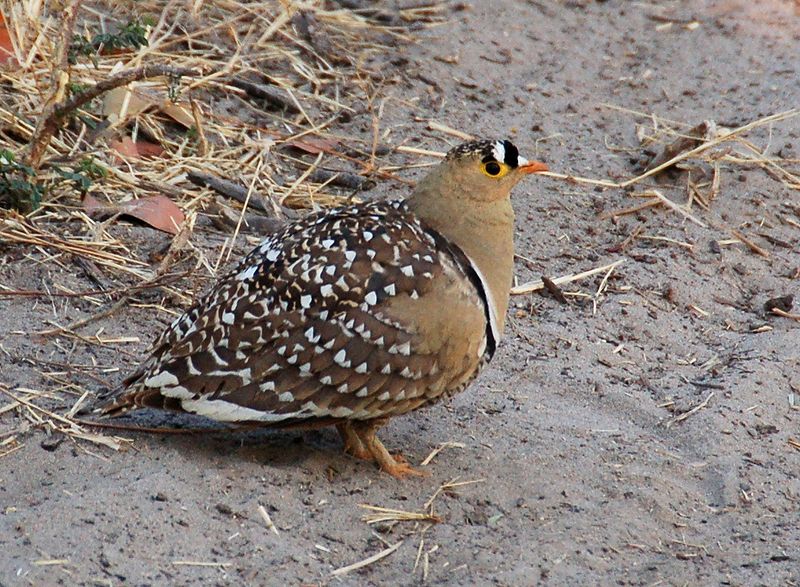
Sandgrouse is birds of the order Pterocliformes, found mainly in Africa and Asia. There are sixteen species belonging to two genera – Syrrhaptes from central Asia and Pterocles from Africa and other Asian countries.
They inhabit treeless areas such as deserts, steppes, scrubland, or savannas and tend to be ground-dwelling birds that feed on seeds.
Sandgrouse has adapted special features for survival in their harsh environment.
They possess well-developed feet with four toes used for walking over hot sand while keeping their body temperature cool at all times by regulating heat loss through their legs.
Their feathers also act like a sponge helping them absorb water before flying long distances back home where they then expel it using specialized glandular secretions located near the wings so that chicks can drink directly from an adult’s breast plumage.Scientific classification:
| Kingdom | Animalia |
| Phylum | Chordata |
| Class | Aves |
| Clade | Columbimorphae |
| Order | Pterocliformes Huxley, 1868 |
| Family | Pteroclidae Bonaparte, 1831 |
Also Featured In: Most Common Birds in China, Italian Birds You Should Know
2. Golden Eagle
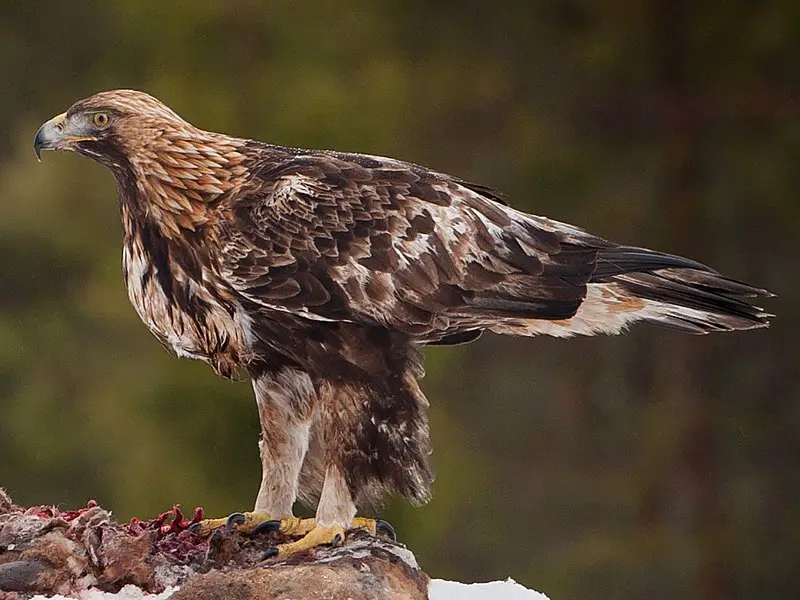
The Golden Eagle is an iconic bird of prey found throughout the northern hemisphere. It is a large, powerful raptor with dark brown feathers and lighter golden-brown plumage on its nape.
Immature eagles have white patches around their beaks, tails and wings which they lose as they mature.
Its diet consists mostly of small mammals such as rabbits, hares and marmots but can also include birds or reptiles depending on where it lives.
These majestic creatures are known for their remarkable strength in flight; using thermal updrafts to soar high into the sky searching for food or simply enjoying the view below them.
They are often seen soaring alone over open expanses looking out for potential threats from other predators like wolves or foxes that may encroach upon their territory.Scientific classification:
| Kingdom | Animalia |
| Phylum | Chordata |
| Class | Aves |
| Order | Accipitriformes |
| Family | Accipitridae |
| Genus | Aquila |
| Species | A. chrysaetos |
Also Featured In: Native Birds of Kazakhstan, Most Common Scotland Birds
3. Bustard
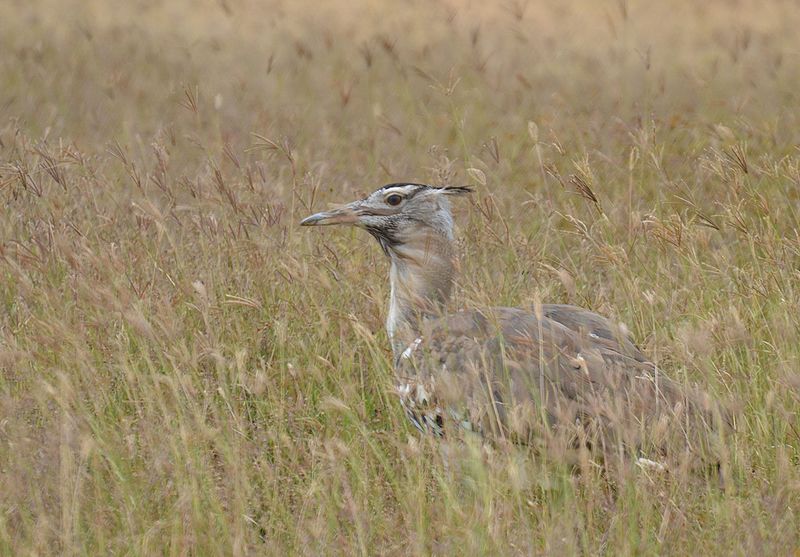
Bustards are large, terrestrial birds that inhabit dry grassland areas and the steppes of the Old World. They range from 40-150 cm in length and belong to the family Otididae.
Bustards have an omnivorous diet consisting of leaves, buds, seeds, fruit as well as small vertebrates and invertebrates.
These birds usually live a solitary life but can be seen gathering around water sources or food during certain times of year such as mating season.
Due to their large size they are vulnerable to predation by foxes or other animals which is why they tend to remain alert at all times.
When in open spaces while relying on camouflage for protection against predators when out in tall vegetation coverings.Scientific classification:
| Kingdom | Animalia |
| Phylum | Chordata |
| Class | Aves |
| Clade | Otidimorphae |
| Order | Otidiformes Wagler, 1830 |
| Family | Otididae Rafinesque, 1815 |
Also Featured In: Common Birds in India, Turkey Birds You Should Know
4. Cactus Wren
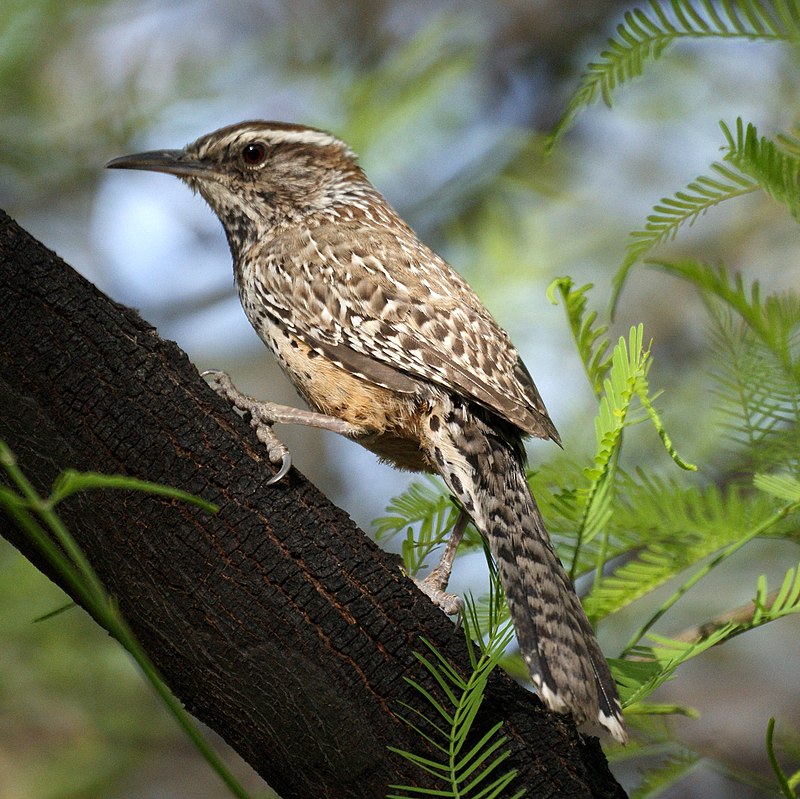
The cactus wren is an enchanting bird found in the deserts of the southwestern United States and northern and central Mexico.
It has a unique brown plumage, with black and white spots as markings, along with a distinctive white eyebrow sweeping to its nape.
Its chest is also snow-white, whereas its belly features light brown bars that contrast nicely against other feathers.
This species holds special significance for Arizona – it was declared their state bird due to its large size compared to other US wrens.
Cactus Wrens are often seen perched atop Saguaro cacti or jumping around on desert ground searching for food such as insects like beetles or spiders.Scientific classification:
| Kingdom | Animalia |
| Phylum | Chordata |
| Class | Aves |
| Order | Passeriformes |
| Family | Troglodytidae |
| Genus | Campylorhynchus |
| Species | C. brunneicapillus |
Also Featured In: Most Common United States Birds, Birds Live Near San Diego
5. Peregrine Falcon
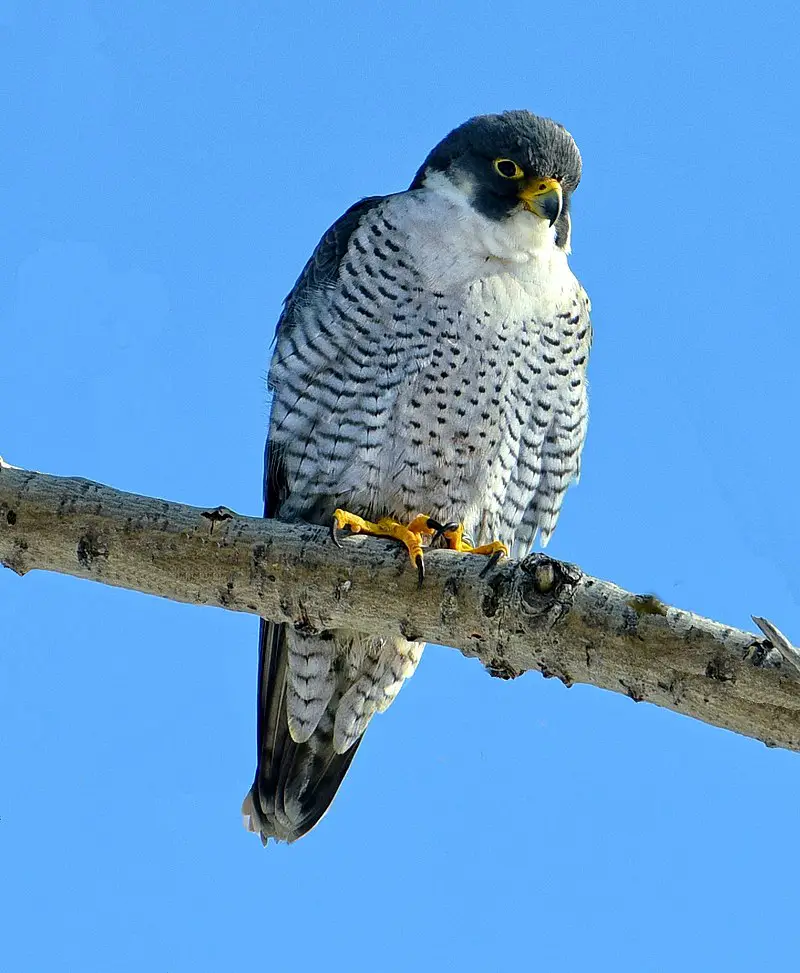
The Peregrine Falcon is a majestic bird of prey belonging to the family Falconidae. It has a blue-grey back, barred white underparts and black head making it easily recognizable.
This intelligent raptor is known for its incredible speed reaching over 320 km/h (200 mph) during hunting dives – one of the fastest animals in existence.
The peregrine falcon can be found around the world from Arctic tundra to tropical rainforests thriving with humans or in high alpine mountains far away from civilization.
With their beauty, power and adaptability they are an impressive species that have earned respect among many cultures throughout history as symbols of strength and endurance.Scientific classification:
| Kingdom | Animalia |
| Phylum | Chordata |
| Class | Aves |
| Order | Falconiformes |
| Family | Falconidae |
| Genus | Falco |
| Species | F. peregrinus |
Also Featured In: Birds of Sweden, Flight Birds You Should Know
6. Greater Roadrunner
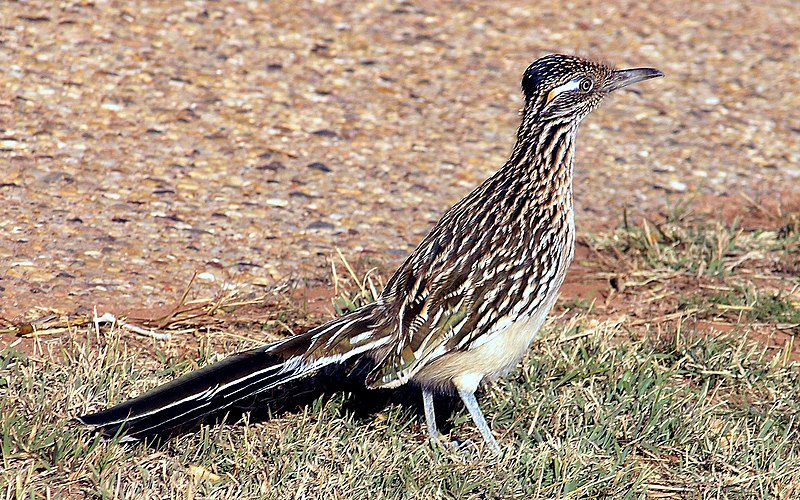
The Greater Roadrunner is a long-legged bird in the Cuculidae family that can be found throughout Aridoamerica. It has many nicknames, including Californian Earth-cuckoo, Chaparral Cock and Snake Killer.
This species is one of two birds belonging to the genus Geococcyx – the other being its smaller counterpart, Lesser Roadrunner.
The Greater Roadrunners are known to eat anything they can catch such as lizards, snakes and insects, making them very valuable predators for keeping pests at bay.
They also have an impressive burst of speed over short distances which helps with hunting prey or escaping danger quickly.
With their large eyes and distinctive black tip on their tail feathers, these amazing creatures make quite an impression when spotted out in nature.Scientific classification:
| Kingdom | Animalia |
| Phylum | Chordata |
| Class | Aves |
| Order | Cuculiformes |
| Family | Cuculidae |
| Genus | Geococcyx |
| Species | G. californianus |
Also Featured In: Birds that Live in Chaparral,
7. Hummingbirds
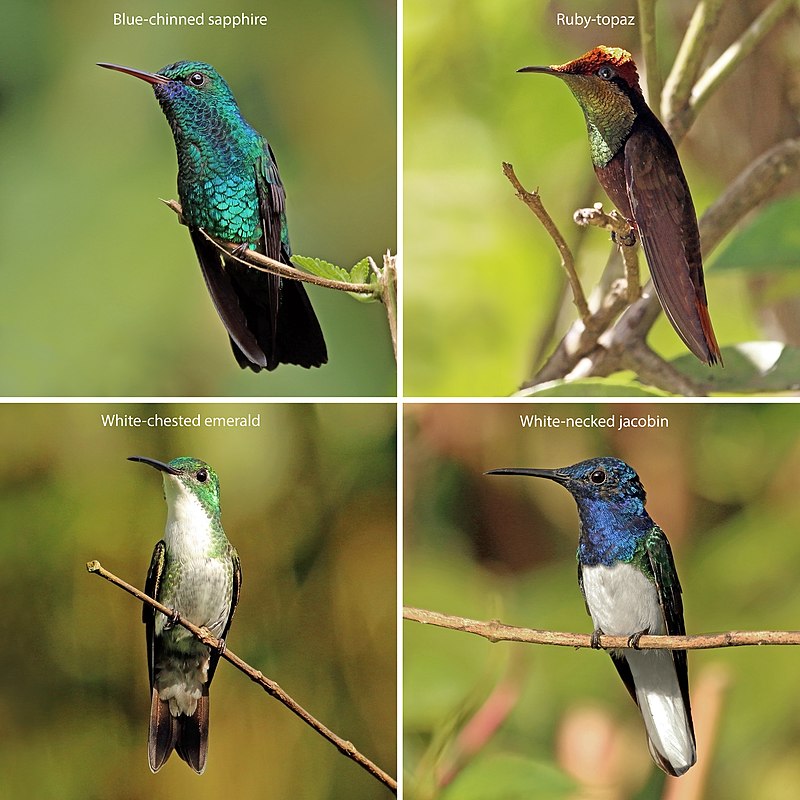
Hummingbirds are tiny birds found throughout the Americas, from Alaska to Tierra del Fuego. Most species measure between 3-5 inches in length and weigh less than an ounce.
The smallest hummingbird is only 2 inches long. Hummingbirds have a unique ability of hovering by rapidly flapping their wings up to 80 times per second.
They feed on nectar and insects, with some species even able to drink sap or eat pollen directly off flowers.
Their vibrant colors make them instantly recognizable as they dart through gardens in search of food and mates.
Hummingbirds truly bring joy into our lives as they remind us that nature’s beauty can be seen around every corner if we take the time to look for it.Scientific classification:
| Kingdom | Animalia |
| Phylum | Chordata |
| Class | Aves |
| Order | Apodiformes |
| Family | Trochilidae Vigors, 1825 |
Also Featured In: Birds for Your Home Garden, Most Common Winter Birds
8. Great Horned Owl
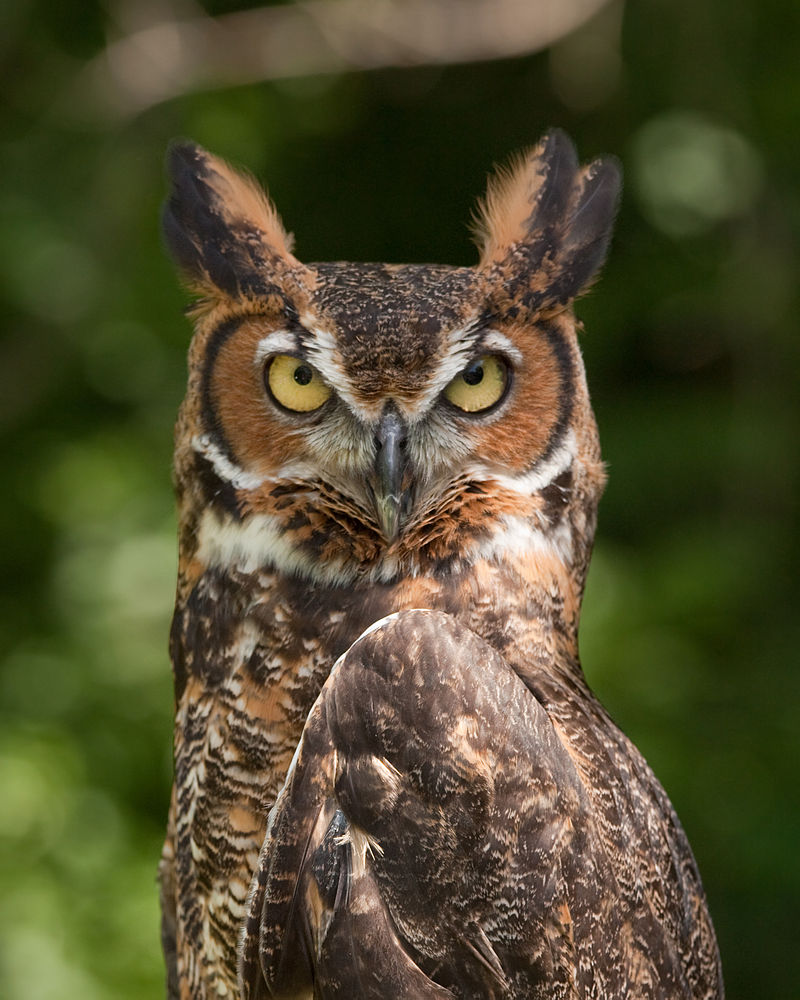
The Great Horned Owl is an impressive bird native to the Americas. It is well-known for its wide range and adaptability, as it can be found in many different habitats across the continent.
Its diet consists primarily of rabbits, hares, rats and mice; however, they are also known to consume skunks, geese and other birds too.
With their powerful talons capable of crushing prey with ease, these owls have earned themselves a fearsome reputation due to their incredible strength.
Their iconic horn-like tufts on either side of its head add another layer of intimidation which helps them stand out from other owls in the area.Scientific classification:
| Kingdom | Animalia |
| Phylum | Chordata |
| Class | Aves |
| Order | Strigiformes |
| Family | Strigidae |
| Genus | Bubo |
| Species | B. virginianus |
Also Featured In: Birds Commonly Found in New York, Birds that Live in San Francisco Bay Area
9. Osprey

The Osprey is a majestic bird of prey with an incredibly wide habitat range. It has distinctive brown upperparts and greyish head and underparts, making it easily identifiable in the skies above many regions across the world.
With a wingspan of up to 180cm (71in) and body length reaching 60cm (24in), this large raptor specializes in hunting for fish, soaring high over rivers as well as coasts searching for its next meal.
Despite living near water sources, they can also be found inhabiting mountainsides or even woodlands, proving their incredible adaptability. An impressive species that truly deserves admiration.Scientific classification:
| Kingdom | Animalia |
| Phylum | Chordata |
| Class | Aves |
| Order | Accipitriformes |
| Family | Pandionidae |
| Genus | Pandion |
| Species | P. haliaetus |
Also Featured In: Ukrainian Birds You Should Know, Birds of Latvia
10. Burrowing Owl
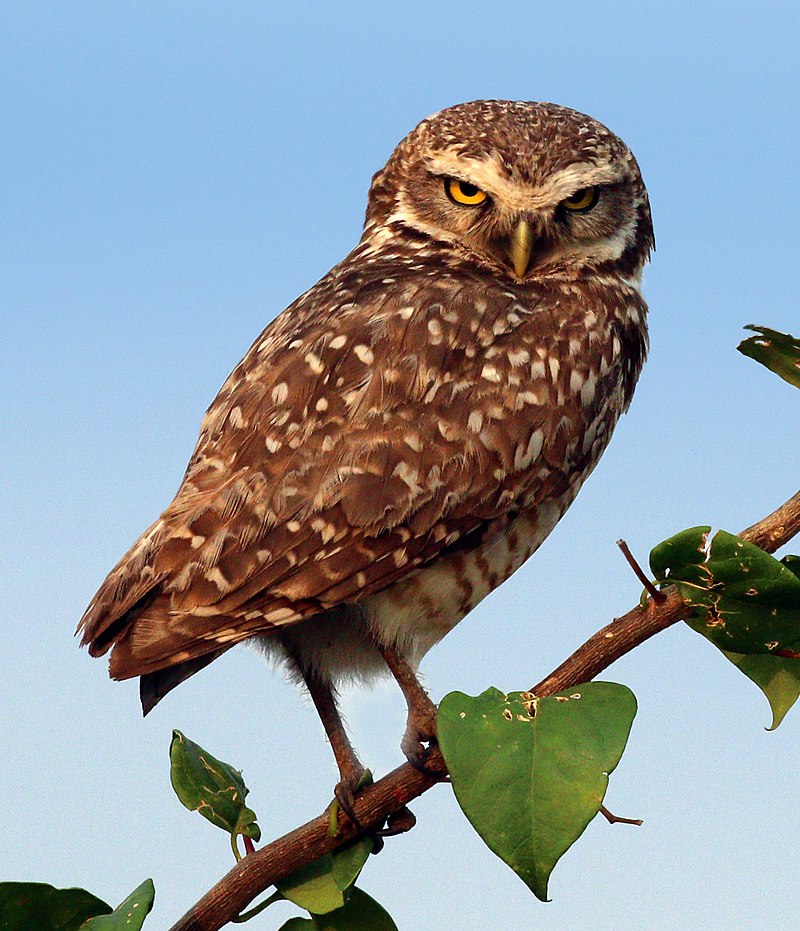
The Burrowing Owl is a small, long-legged owl found in open landscapes throughout North and South America. They are typically seen in grasslands, rangelands, agricultural areas or deserts with low vegetation.
Unlike most owls they nest and roost underground by taking over burrows made by other animals such as prairie dogs.
Their diet consists of insects, rodents and sometimes lizards or frogs that they hunt during the night time hours when their eyesight is sharpest.
This species faces threats due to habitat loss caused by human development but conservation efforts have been successful at reversing some of this damage allowing for populations to remain stable into the future despite these pressures.Scientific classification:
| Kingdom | Animalia |
| Phylum | Chordata |
| Class | Aves |
| Order | Strigiformes |
| Family | Strigidae |
| Genus | Athene |
| Species | A. cunicularia |
Also Featured In: Beautiful Brazilian Birds, Birds that Live around Southwest Florida
11. White-Winged Dove
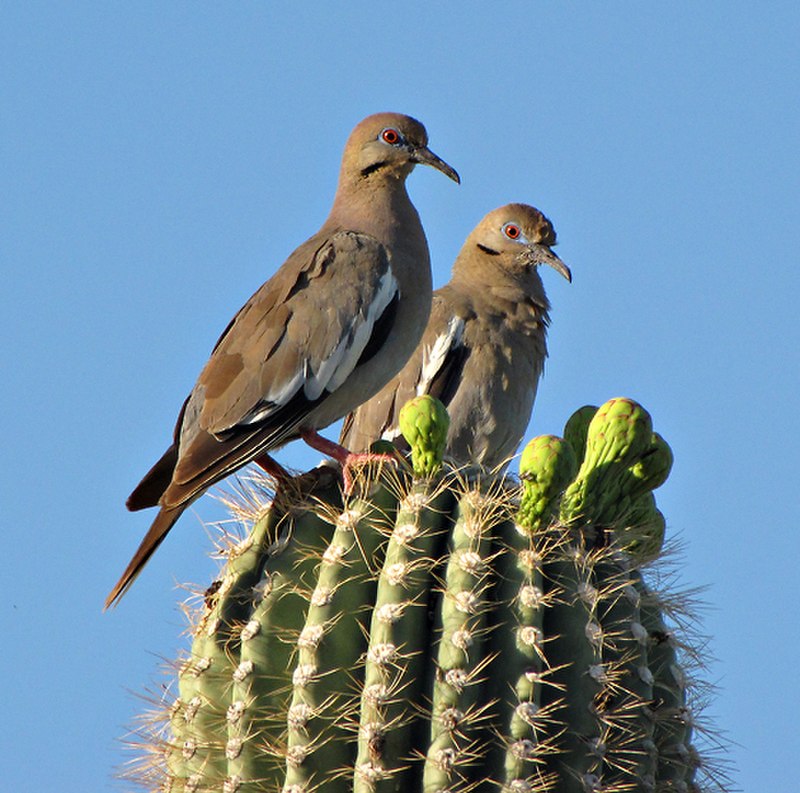
The White-winged Dove is an impressive bird with a large body and wingspan. Its distinctive feature is the white edge on its wings, which makes it easily recognizable when in flight.
It has blue eyerings, red eyes and gray plumage, while juveniles are duller in coloration than adults.
This dove species inhabits areas from Southwestern United States through Mexico to Central America as well as Caribbean islands.
They usually live close to human settlements or cities but can also be found in agricultural fields feeding on grains like corn or wheat seeds left by farmers after harvest season ends.
In their natural habitat they feed primarily on insects, fruits and small plants such as certain cacti species.Scientific classification:
| Kingdom | Animalia |
| Phylum | Chordata |
| Class | Aves |
| Order | Columbiformes |
| Family | Columbidae |
| Genus | Zenaida |
| Species | Z. asiatica |
Also Featured In: Top Birds Found in Mexico, Central Texas Birds
12. Lesser Goldfinch
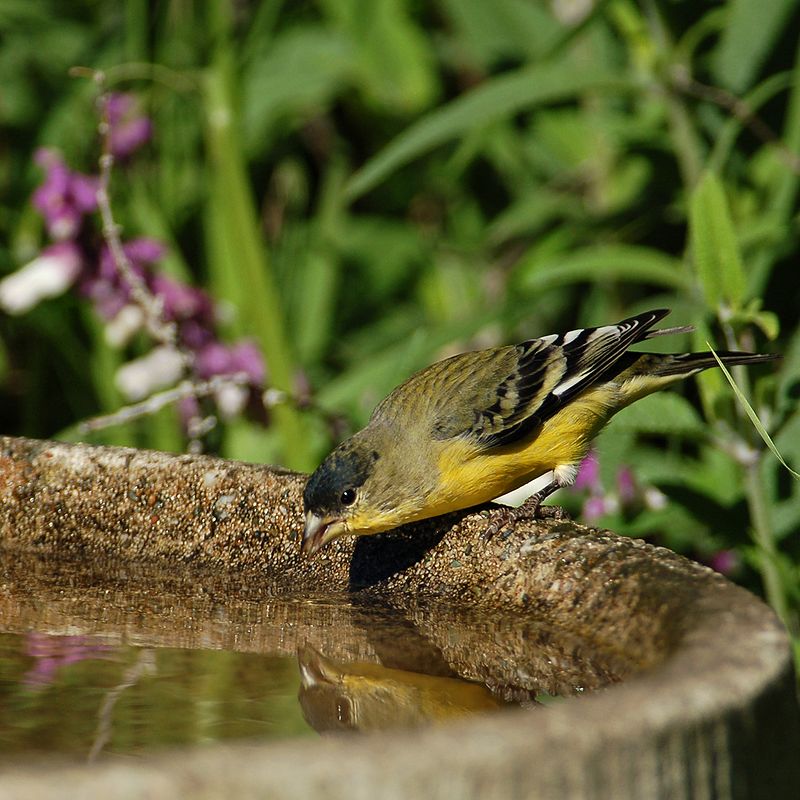
The Lesser Goldfinch is a tiny species of bird found in the Americas. It belongs to the same clade as American goldfinches and Lawrence’s goldfinches, which can be identified by their males having black or rarely green foreheads.
The face appears red or yellow on these birds unlike other species in its genus Spinus sensu stricto.
They are small songbirds with short bills, brown wings and tails with white edges, grey-brown backs and olive heads.
These birds inhabit open woodlands and fields where they feed mainly on seeds from weeds such as thistle, pigweed and ragweed but also consume insects at times during breeding season for additional nutrition.
In addition to being an important part of North America’s avian ecology, these birds have been popularized through recent artwork depicting them in various poses among flowers.Scientific classification:
| Kingdom | Animalia |
| Phylum | Chordata |
| Class | Aves |
| Order | Passeriformes |
| Family | Fringillidae |
| Subfamily | Carduelinae |
| Genus | Spinus |
| Species | S. psaltria |
Also Featured In: Birds that Live in Yosemite National Park, Yellow Birds You’ll Find in Minnesota
13. Turkey Vulture
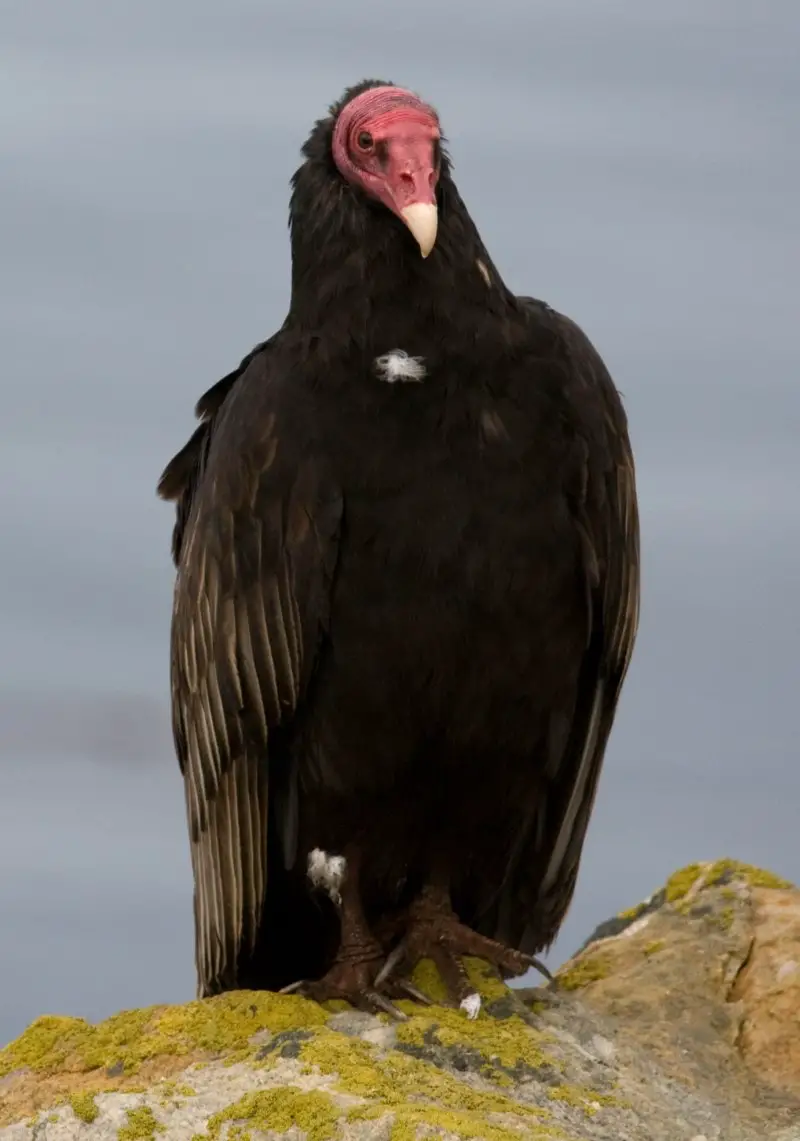
The turkey vulture is a large bird of prey that can be found in many parts of the world. It has a wingspan of up to 6 feet and its feathers are mostly black with brownish-red patches on the underside which give it an overall dark red appearance.
Its head is bald, which helps protect it from getting overheated when flying long distances looking for food.
The Turkey Vulture usually feeds off carrion but will also feed on fruit and insects.
Its keen eyesight allows them to spot potential meals from miles away while they soar through the sky using their broad wings and thermal air currents to stay aloft without expending much energy.
They are very important scavengers as they keep ecosystems healthy by consuming dead animals before disease can spread amongst living creatures or contaminate local water sources like rivers or lakesScientific classification:
| Kingdom | Animalia |
| Phylum | Chordata |
| Class | Aves |
| Order | Accipitriformes |
| Family | Cathartidae |
| Genus | Cathartes |
| Species | C. aura |
Also Featured In: Scavengers Birds You Should Know, Common Carnivore Birds
14. Falcon
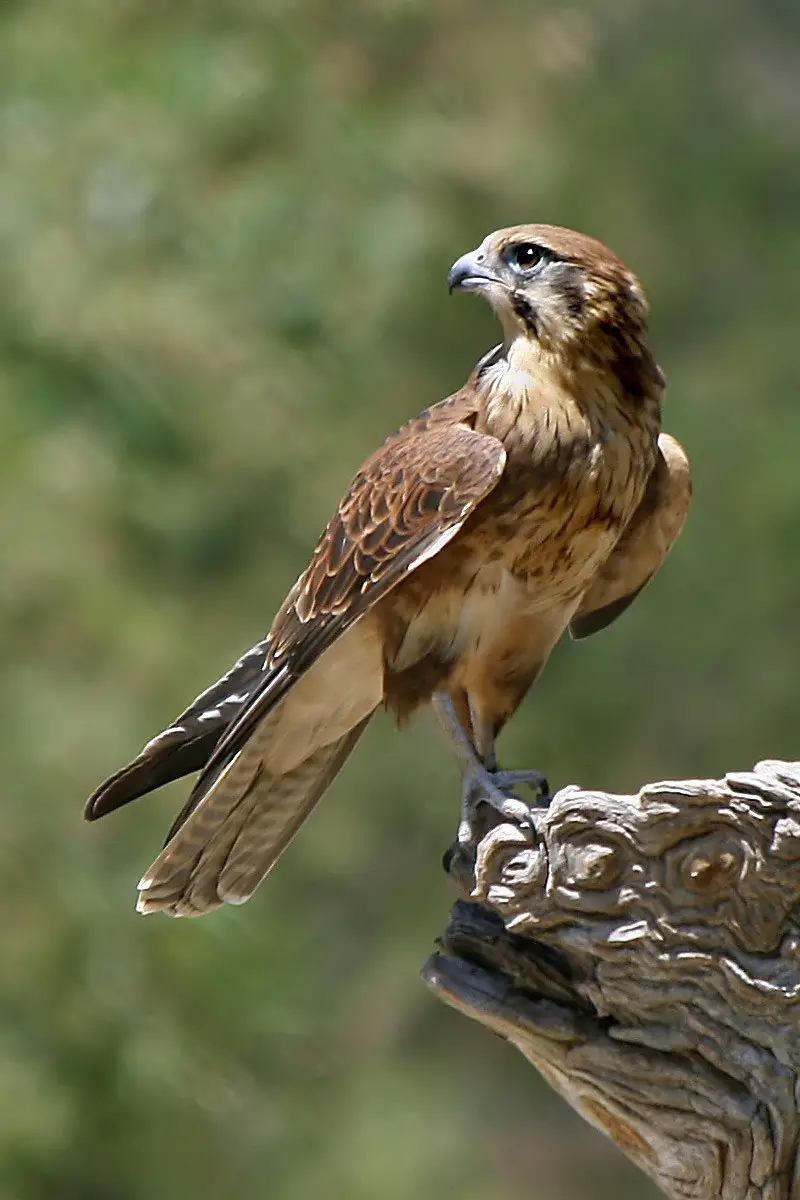
Falcons are majestic birds of prey found in almost all parts of the world, except Antarctica. They have long, slender wings that allow them to fly swiftly and change directions quickly.
As adults they feed on small animals such as mice and insects, but when young their diet consists mainly of carrion or food provided by their parents.
Falcons use a range of techniques for hunting including hovering high up above potential prey before diving down at great speed to catch it during flight.
Additionally they also ambush unsuspecting victims from concealed perches close to the ground.
These remarkable hunters can even take advantage of thermal currents rising off warm surfaces like roads which give them an extra boost while flying.Scientific classification:
| Kingdom | Animalia |
| Phylum | Chordata |
| Class | Aves |
| Order | Falconiformes |
| Family | Falconidae |
| Subfamily | Falconinae |
| Genus | Falco Linnaeus, 1758 |
Also Featured In: Egyptian Birds, Spiritual Birds
15. Great Blue Heron
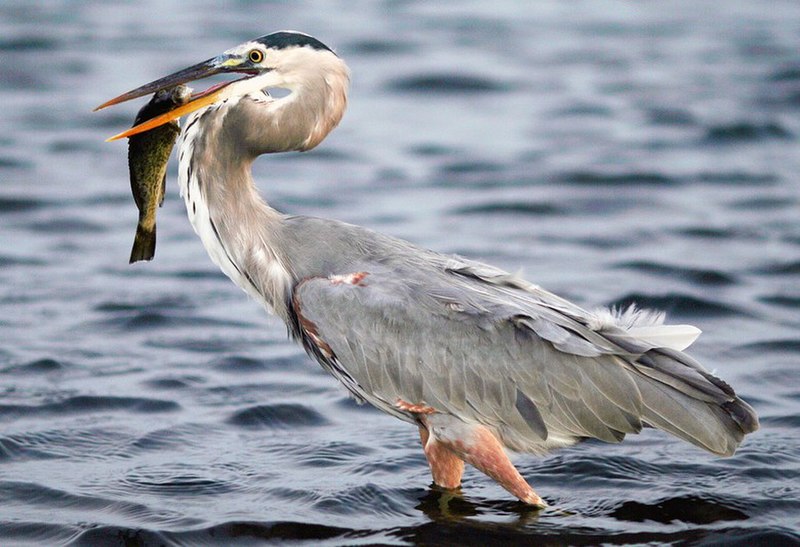
The Great Blue Heron is a majestic wading bird found in many parts of North America, Central America, the Caribbean and even as far away as the Galapagos Islands.
It has an impressive wingspan which can reach up to six feet wide. Its feathers are mainly bluish-gray with brownish streaks on both its neck and chest while its head displays white plumes.
The adult herons can also be identified by their yellow bill and legs.
They live near bodies of water such as lakes, marshes or rivers where they feed on fish using a spear like motion with their sharp bills.
An all-white population exists only in south Florida and the Florida Keys making it quite unique.Scientific classification:
| Kingdom | Animalia |
| Phylum | Chordata |
| Class | Aves |
| Order | Pelecaniformes |
| Family | Ardeidae |
| Genus | Ardea |
| Species | A. herodias |
Also Featured In: Common Birds in Canada, Water Birds Live around Us
16. Desert Lark
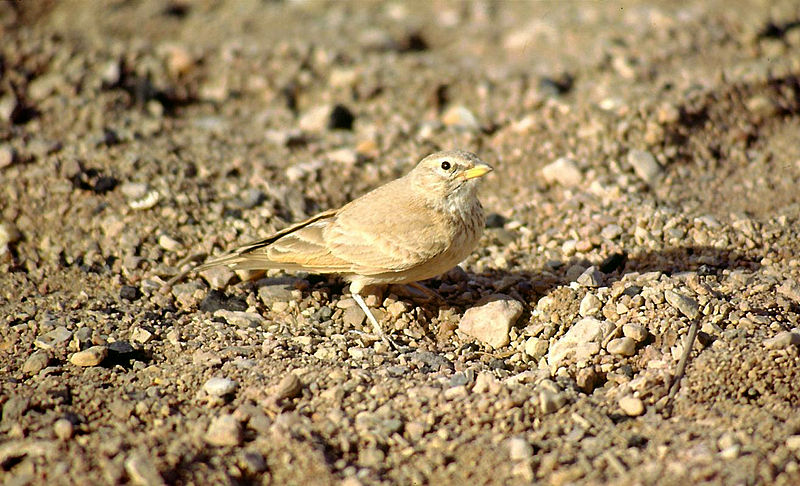
The Desert Lark is a species of bird found in the deserts and semi-deserts of Morocco to western India. It has an impressive distribution range, which only continues to grow as its population slowly increases.
Luckily they are not facing any serious threats, so their conservation status is currently rated as “least concern” by the International Union for Conservation of Nature.
They have a greyish brown plumage with white streaks on their wings and tail feathers that make them quite distinctive from other birds in the same region.
The desert lark also has black beaks and legs which contrast nicely against its coloured feathers – making it stand out even more.Scientific classification:
| Kingdom | Animalia |
| Phylum | Chordata |
| Class | Aves |
| Order | Passeriformes |
| Family | Alaudidae |
| Genus | Ammomanes |
| Species | A. deserti |
Also Featured In: Common Birds in Saudi Arabian,
17. Red-Tailed Hawk
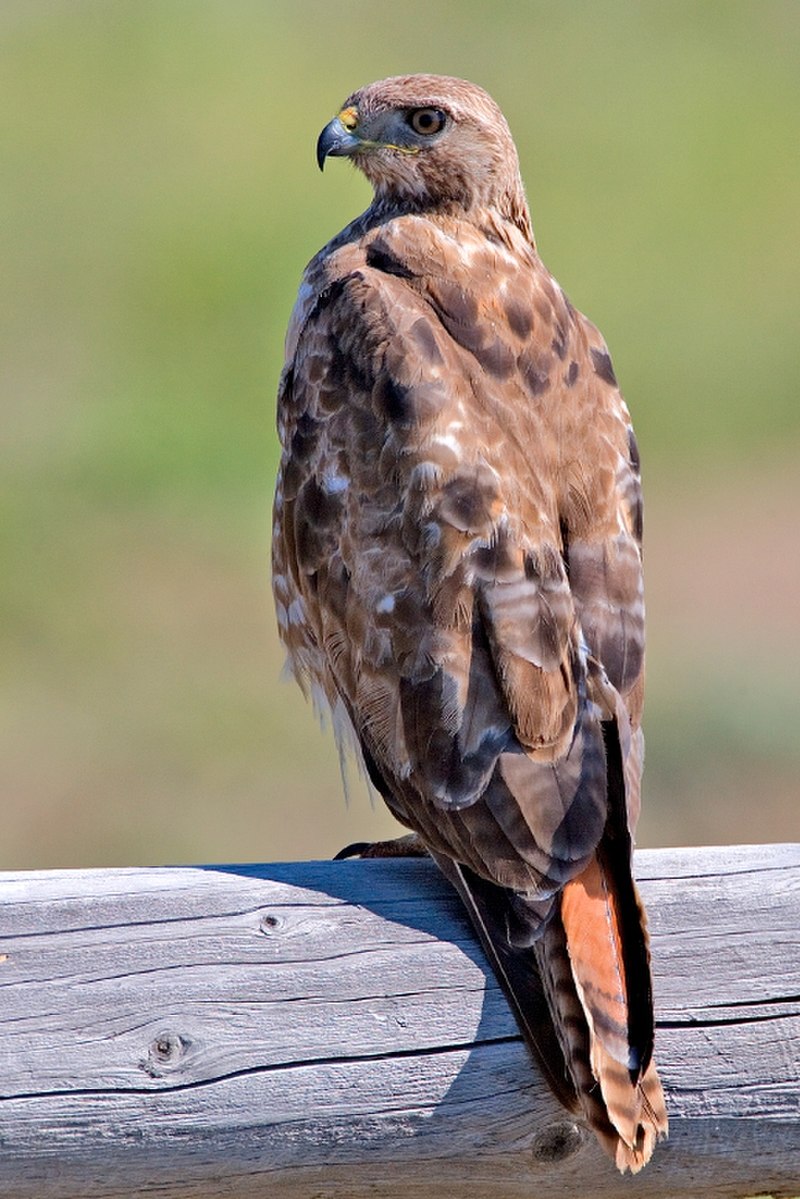
The Red-tailed Hawk is a majestic bird of prey with its distinctive red tail. It can be found throughout North America, from Alaska in the north to Panama and the West Indies in the south.
This species belongs to Buteo genus, which makes it one of most common raptors on earth.
These hawks mainly hunt small mammals such as rabbits or squirrels but also feed on reptiles and birds during migration season.
Unlike other predator birds, they prefer open areas for hunting like fields or grasslands rather than dense forests.
They build their nests high up on trees where they stay all year long unless disturbed by humans or animals nearby.
Their presence has become an iconic part of American culture due to their frequent sightings around homes and parks alike making them beloved creatures among people everywhere.Scientific classification:
| Kingdom | Animalia |
| Phylum | Chordata |
| Class | Aves |
| Order | Accipitriformes |
| Family | Accipitridae |
| Genus | Buteo |
| Species | B. jamaicensis |
Also Featured In: Dominican Republic birds, Birds Live in Arkansas
18. Bearded Vulture
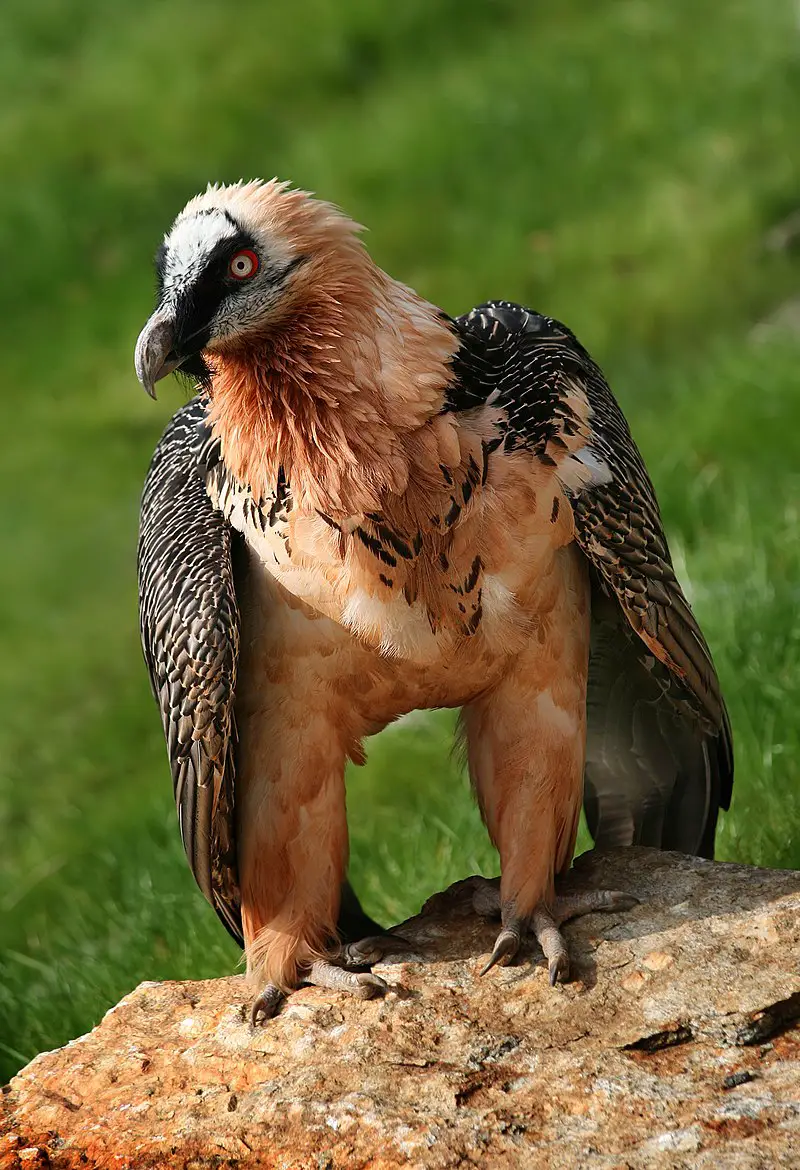
The Bearded vulture, also known as the lammergeier and ossifrage, is a majestic bird of prey belonging to its own genus within Accipitridae. It has an impressive wingspan that can reach up to 2.5m wide.
Its habitat ranges from Europe through Africa and into parts of Asia, where it prefers rocky areas with cliffs or mountainsides for nesting sites.
The bearded vulture’s diet consists mainly of carrion but it will occasionally feed on small mammals such as rabbits or hares too – using their powerful beak to crack open bones in order to get at the nutritious marrow inside.
These birds are highly endangered due primarily to human interference so conservation efforts must continue in order for us all have them around for future generations.Scientific classification:
| Kingdom | Animalia |
| Phylum | Chordata |
| Class | Aves |
| Order | Accipitriformes |
| Family | Accipitridae |
| Genus | Gypaetus Storr, 1784 |
| Species | G. barbatus |
Also Featured In: Common Birds Found in Switzerland, East African Birds
19. Pin-Tailed Sandgrouse
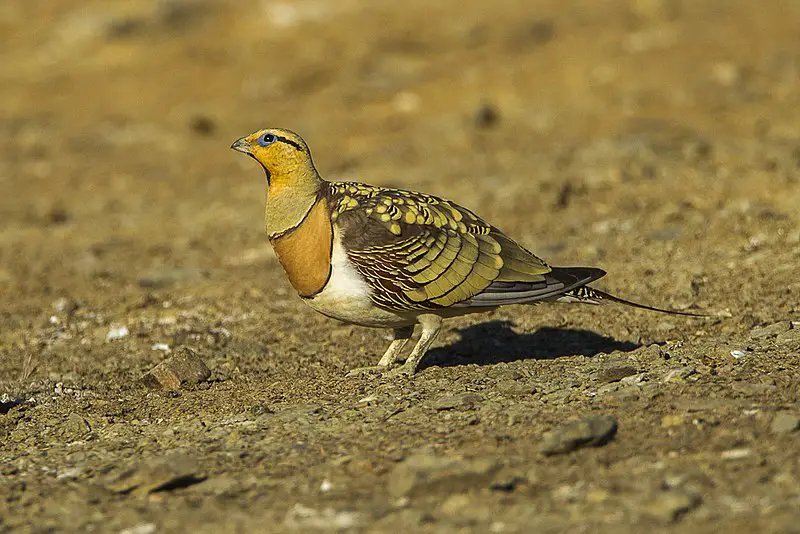
The Pin-tailed Sandgrouse is a medium-sized bird with a small, pigeon-like head and neck and sturdy body. It has long pointed wings that are white underneath, as well as a long tail and fast direct flight.
They congregate in flocks to watering holes at dawn, making loud calls of “kattar-kattar”. This social species lives on open treeless plains or similar areas where they can find food such as seeds or insects.
During breeding season the male will perform an impressive display which involves fanning out its tail feathers while displaying his bright yellow eye patch to attract females.
The male also provides water for the female by sopping up moisture from damp ground in its breast feathers before flying back to meet her at their nest site where she incubates their eggs until hatching occurs.
These birds have adapted over time to survive some harsh climates but now face threats due to habitat destruction and hunting pressure; conservation efforts must be put into place if we are going keep this incredible species alive for future generations.Scientific classification:
| Kingdom | Animalia |
| Phylum | Chordata |
| Class | Aves |
| Order | Pterocliformes |
| Family | Pteroclidae |
| Genus | Pterocles |
| Species | P. alchata |
Also Featured In: Kuwait Birds, Birds That Live in Iraq
20. Indigo Bunting
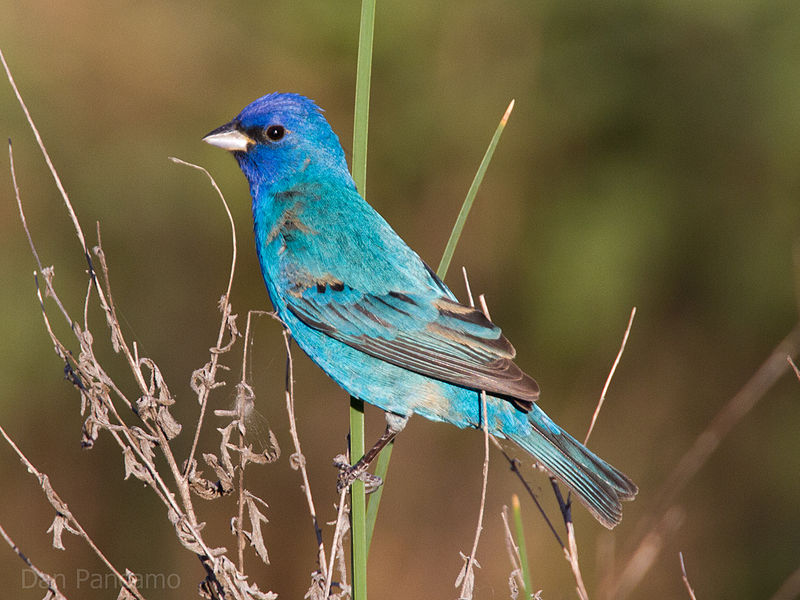
The Indigo Bunting is a small bird in the cardinal family, found throughout North and South America.
It has an unmistakable bright blue plumage that stands out against its natural habitat of farmland, brush areas and open woodland.
During breeding season it can be seen from southern Canada to northern Florida while during winter months it migrates south towards Central and Northern South America.
The Indigo Bunting prefers to migrate at night using the stars as navigation aids.
This species feeds on insects and seeds which they find near the ground or catch mid-flight with their agile wingspan.
An iconic sight for many farmers across both continents, these birds are a welcome addition to any backyard oasis or wildflower meadow.Scientific classification:
| Kingdom | Animalia |
| Phylum | Chordata |
| Class | Aves |
| Order | Passeriformes |
| Family | Cardinalidae |
| Genus | Passerina |
| Species | P. cyanea |
Also Featured In: Georgia Birds, Blue Birds You’ll Found around Us
21. Cooper’s Hawk
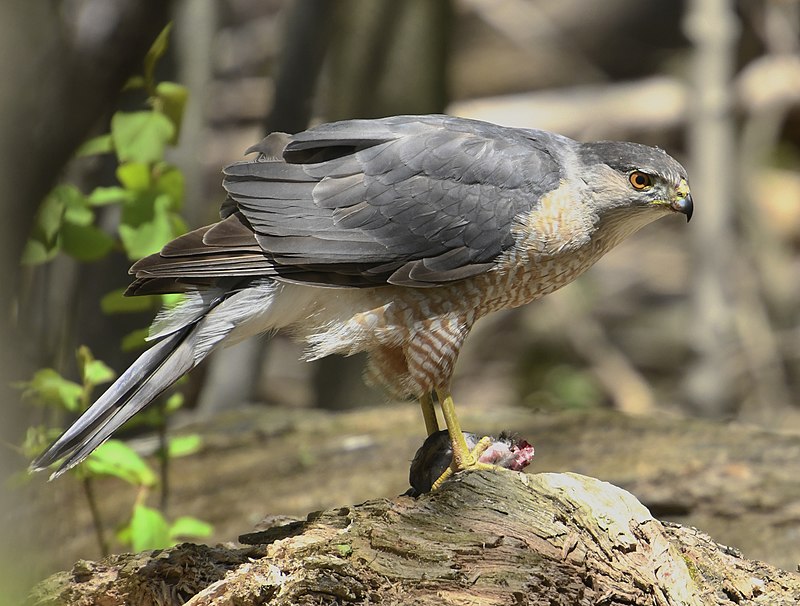
Cooper’s Hawk is a medium-sized bird of prey native to North America. It belongs to the Accipiter genus, which are known for their agility and small size compared to other hawks.
They usually inhabit wooded areas, making them well-adapted hunters in dense environments.
Cooper’s Hawks have rounded wings with short tails that help them maneuver quickly through trees when chasing after prey such as small rodents or birds.
These raptors also possess powerful feet equipped with sharp talons used for catching food items on the ground and even out of midair.
The adult plumage has barred upperparts, ranging from greyish brown on lighter individuals up to dark chestnut colors found in darker specimens; they also display rusty underparts marked by thin white streaking down either side of their chests and bellies.Scientific classification:
| Kingdom | Animalia |
| Phylum | Chordata |
| Class | Aves |
| Order | Accipitriformes |
| Family | Accipitridae |
| Genus | Accipiter |
| Species | A. cooperii |
Also Featured In: New Hampshire Birds You Should Know, British Columbian Birds
22. Ferruginous Pygmy Owl
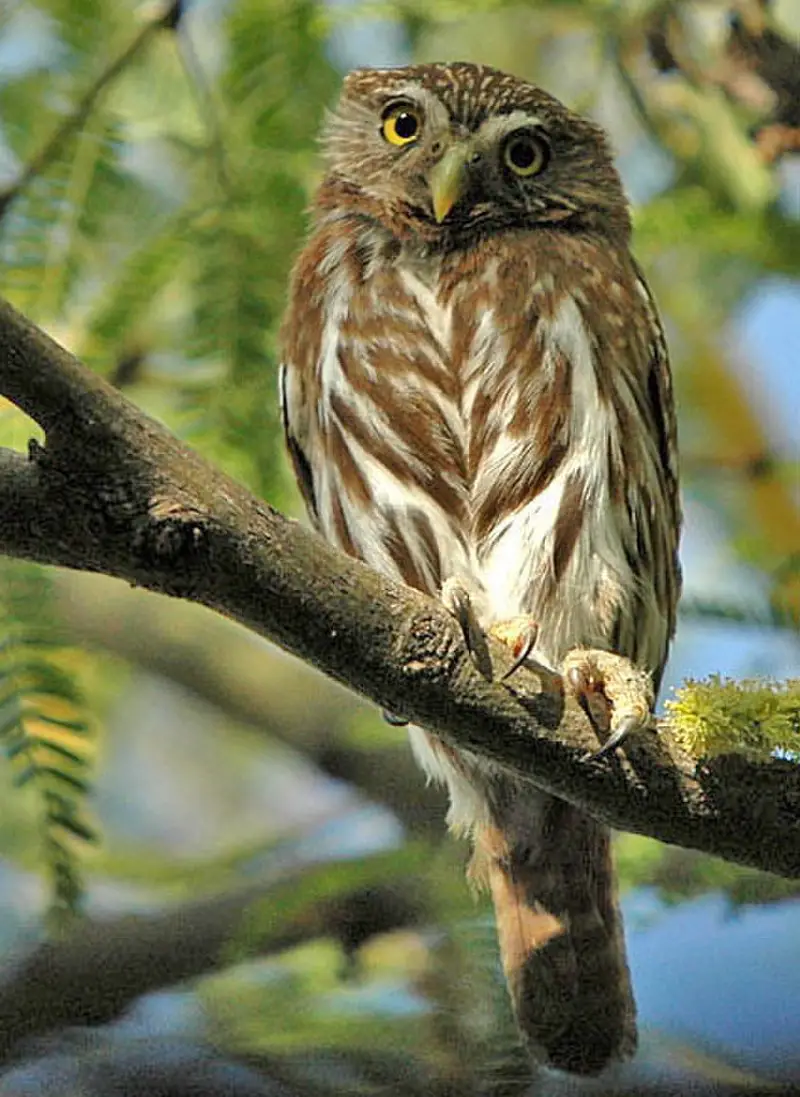
The ferruginous pygmy owl is a small species of owl that can be found throughout much of Central and South America, as well as parts of the United States.
It has rusty-brown feathers on its body, giving it an overall “ferruginous” colouration. The bird feeds mainly on insects and other invertebrates, but also eats some larger prey such as lizards or mice when available.
During breeding season the birds build nests in tree cavities to raise their young. They are usually nocturnal creatures but may become active during daylight hours if disturbed by humans or predators nearby.
This adaptable little raptor is often seen perching atop buildings or street lights in urban areas where they have adapted to live alongside human activity while still finding food sources within cities and townships alike.Scientific classification:
| Kingdom | Animalia |
| Phylum | Chordata |
| Class | Aves |
| Order | Strigiformes |
| Family | Strigidae |
| Genus | Glaucidium |
| Species | G. brasilianum |
Also Featured In: Uruguay birds,
23. Snowy Egret
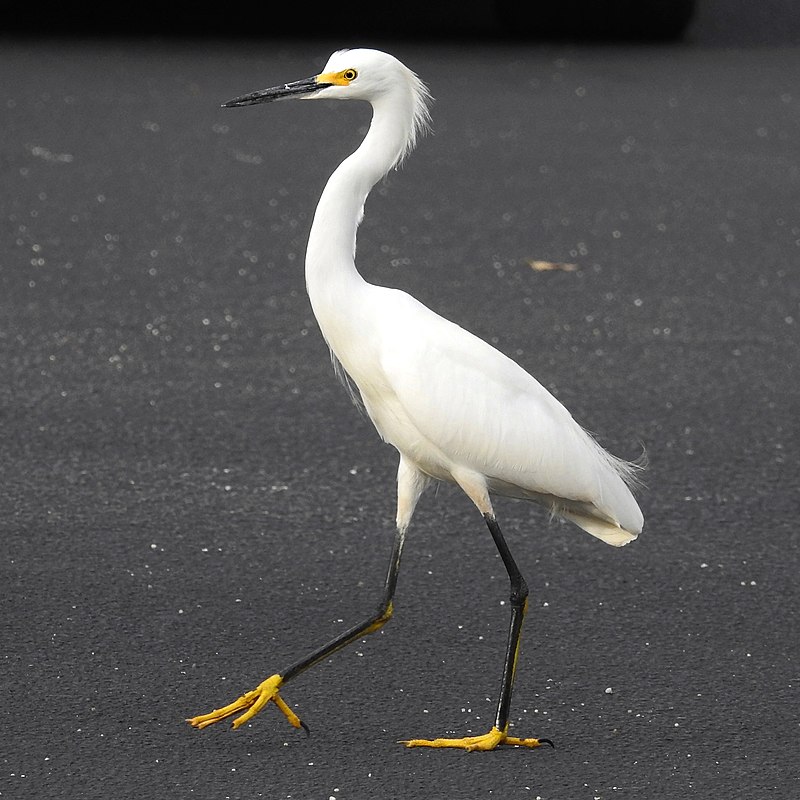
The Snowy Egret is a small white heron native to North America. Its scientific name, Egretta thula, comes from Provençal French for the little egret and an incorrect reference to the Black-necked Swan by Chilean naturalist Juan Ignacio Molina in 1782.
This beautiful bird has black legs with yellow feet, and a long plume of feathers on its head that often appears as if it’s wearing a crown.
It feeds primarily on insects and aquatic life like fish or frogs making it well adapted for both wetland habitats such as marshes or swamps plus coastal areas close to shorelines.
With their graceful movements they are truly delightful creatures to observe while out exploring nature.Scientific classification:
| Kingdom | Animalia |
| Phylum | Chordata |
| Class | Aves |
| Order | Pelecaniformes |
| Family | Ardeidae |
| Genus | Egretta |
| Species | E. thula |
Also Featured In: Trinidad and Tobago birds, Swamps Birds You Should Know
24. Black-Tailed Gnatcatcher
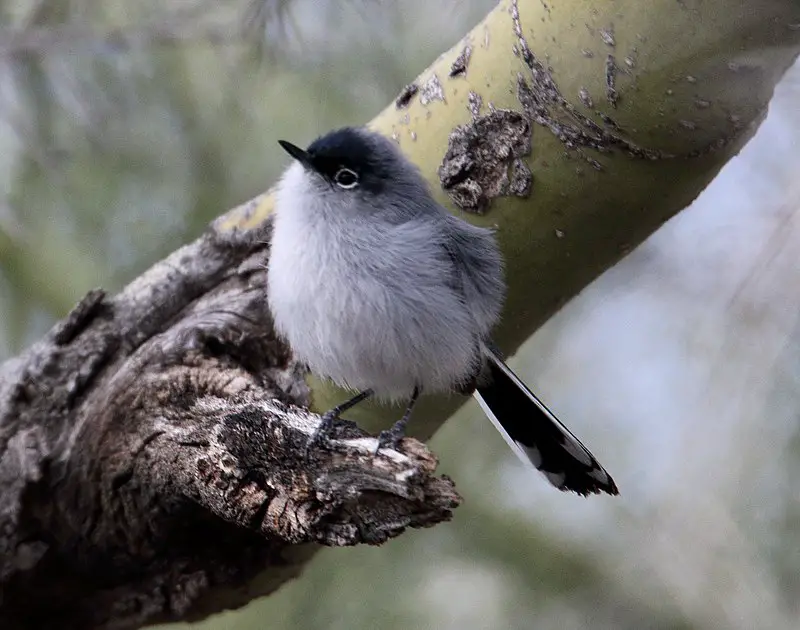
The Black-tailed Gnatcatcher is a small, insectivorous bird found in the Sonoran and Chihuahuan Deserts of North America. These birds do not migrate and can be seen year round in dry desert areas.
Described by American ornithologist George Newbold Lawrence in 1857, its scientific name (Polioptila melanura) translates to ‘black-tailed’.
It has an overall grayish brown plumage with white wingbars, black tail feathers, a long slender bill for catching insects on the fly and pale eyes lined with dark markings .
They are vocal birds that produce melodious song including trills, warbles and whistles often heard during breeding season from May through August.
The diet consists mainly of various insects such as flies , moths , beetles as well bugs which help control pest populations naturally making it an important species for our eco system.Scientific classification:
| Kingdom | Animalia |
| Phylum | Chordata |
| Class | Aves |
| Order | Passeriformes |
| Family | Polioptilidae |
| Genus | Polioptila |
| Species | P. melanura |
Also Featured In: Chickadees Birds, Birds that Live in Arizona Desert
25. Prairie Falcon
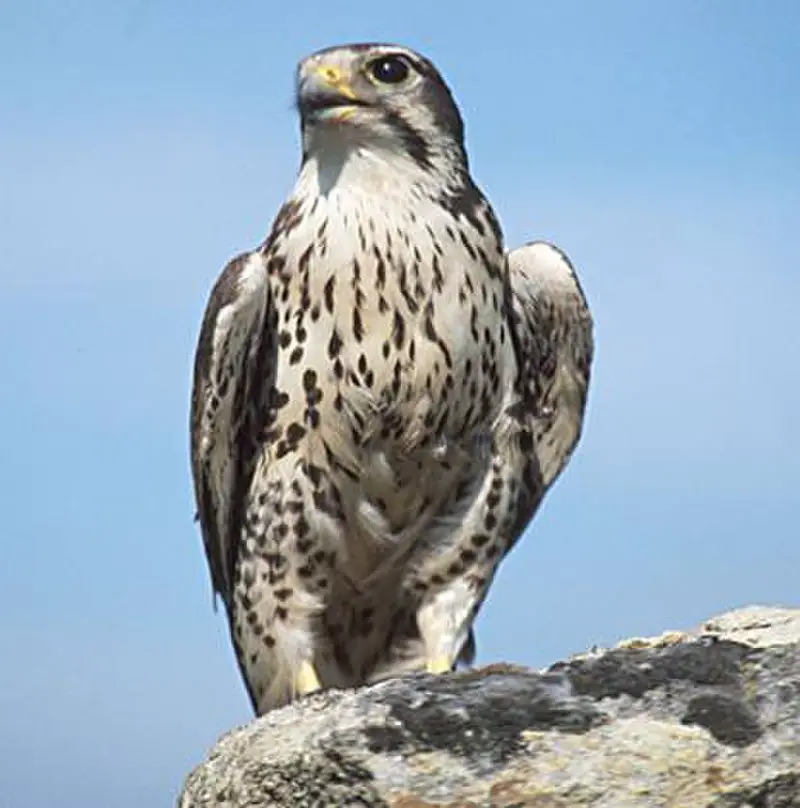
The Prairie Falcon is a distinct species of medium-large sized falcon found in western North America. It has an average length of 40cm, wingspan of 1 meter and weighs around 720g.
Females tend to be larger than males typical for all falcons.
Although separate from the Peregrine Falcon, they share many similarities such as similar coloring on their back and shoulders with dark spots on light brown feathers which helps them blend into the environment while hunting prey like small birds or rodents over open areas like grasslands or deserts.
They are also known to fly extremely fast reaching speeds up to 80 miles per hour.Scientific classification:
| Kingdom | Animalia |
| Phylum | Chordata |
| Class | Aves |
| Order | Falconiformes |
| Family | Falconidae |
| Genus | Falco |
| Species | F. mexicanus |
Also Featured In: Falcons Species, Common Birds in Alberta
26. Western Kingbird
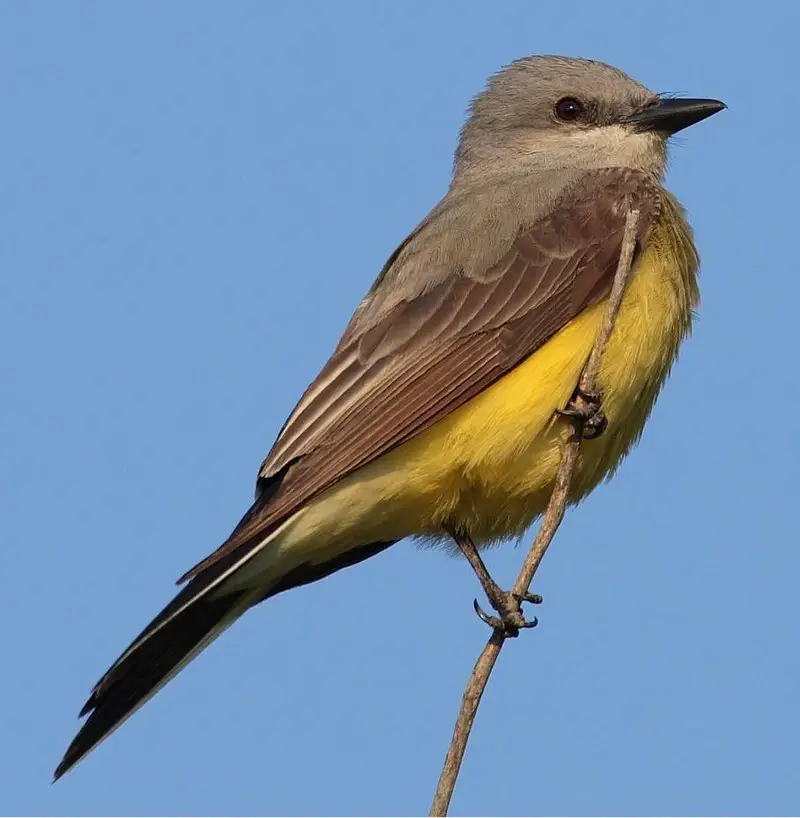
The Western kingbird is a large tyrant flycatcher native to western North America. It has striking plumage, with gray and yellow feathers tinged with crimson during courtship or when defending territory from intruders.
As is characteristic of its kind, the Western Kingbird exhibits highly territorial behavior towards other birds in its area.
They are found as far south as Mexico, inhabiting open habitats near bodies of water such as rivers and lakes.
While their primary diet consists of insects like bees and flies that they catch mid-flight, it also includes fruit for variety during winter months.
The species have recently seen an increase in population due to conservation efforts which aim to protect these beautiful creatures.Scientific classification:
| Kingdom | Animalia |
| Phylum | Chordata |
| Class | Aves |
| Order | Passeriformes |
| Family | Tyrannidae |
| Genus | Tyrannus |
| Species | T. verticalis |
Also Featured In: Flycatchers Species, Common Southern Californian Birds
27. Costa’s Hummingbird
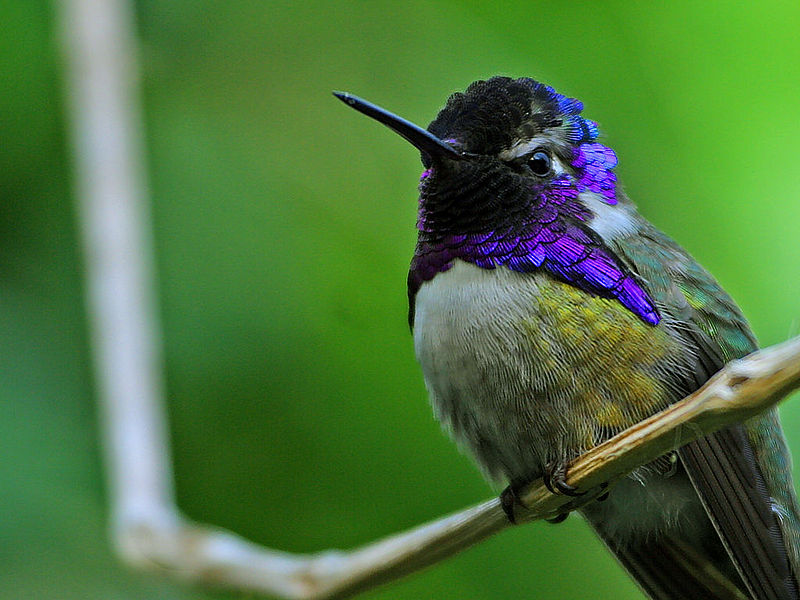
Costa’s hummingbird is a species of the Trochilidae family. It inhabits arid regions in both the southwest United States and northwest Mexico, migrating to western Mexico for wintering purposes.
This bird was named by French ornithologist Jules Bourcier in 1839 after honouring François Coste, who had sent specimens to him from North America.
Costa’s hummingbirds are small birds averaging 3-3.5 inches (7–9cm) long with typically green feathers on their back and tail while underparts are usually greyish or sometimes white with purple highlights around throat area giving them an iridescent appearance when light hits it right angle.
Males also have red patches on forehead which they use as part of courtship display behavior along with singing distinctive “wheep” sound during mating season.Scientific classification:
| Kingdom | Animalia |
| Phylum | Chordata |
| Class | Aves |
| Order | Apodiformes |
| Family | Trochilidae |
| Genus | Calypte |
| Species | C. costae |
Also Featured In: Hummingbirds Species, Phoenix Birds You Should Know
28. Lucifer Sheartail
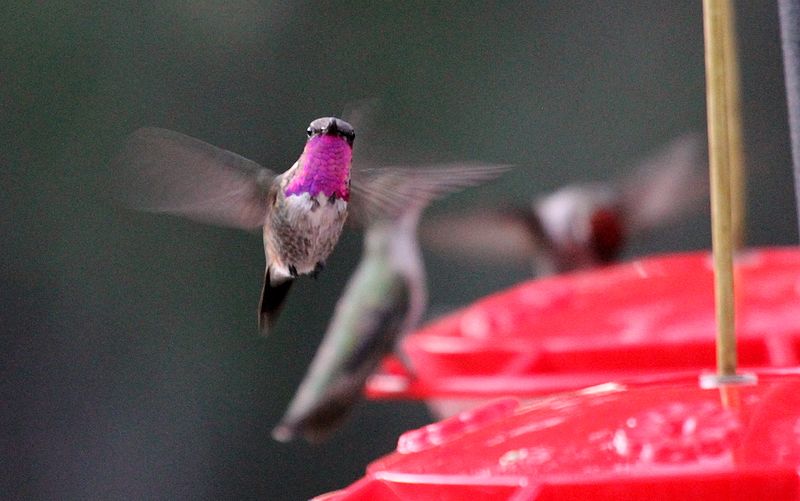
The Lucifer Sheartail is a stunning green hummingbird found in the high-altitude areas of northern Mexico and southwestern United States.
It measures around 10 cm long and has a slightly curved bill with distinctive outward flare of its gorget feathers.
During winter, it migrates to central Mexico for warmer climate. This bird feeds on nectar from flowers as well as small insects which provide protein necessary for growth.
Its vibrant colors make it easily recognizable among other birds, adding beauty to its natural surroundings.Scientific classification:
| Kingdom | Animalia |
| Phylum | Chordata |
| Class | Aves |
| Order | Apodiformes |
| Family | Trochilidae |
| Genus | Calothorax |
| Species | C. lucifer |
29. Western Screech Owl
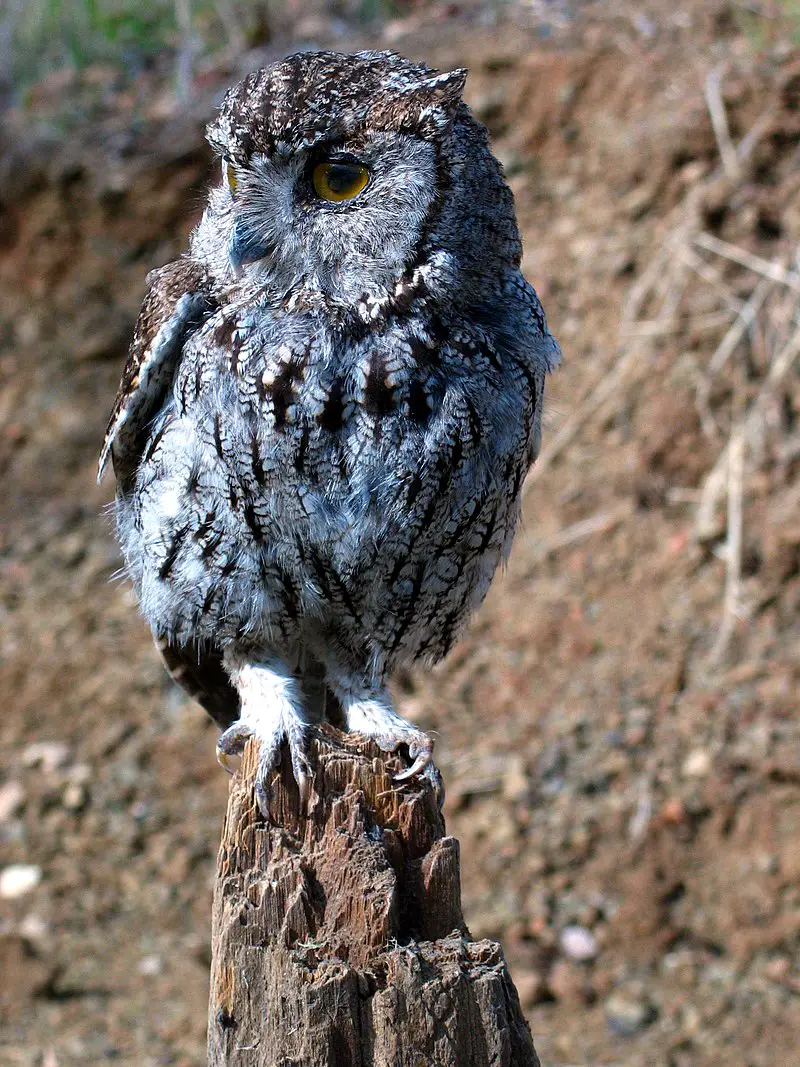
The Western Screech Owl is a small bird native to both North and Central America. It belongs to the same family as its Eastern counterpart, standing at an average of 22 cm tall with 55 cm wingspan and weighing about 143 g.
Females tend to be larger than males, while weight can range from 88-220g depending on habitats in Northern populations being heavier than those living further south.
The scientific name for this owl pays homage to American naturalist Robert Kennicott who studied these birds extensively during his life’s work.
Their diet mostly consists of invertebrates such as insects but they may also hunt small mammals when food sources are scarce or seasonally available.
Their habitat preferences vary across different parts of their geographical range due mainly to environmental conditions like climate and vegetation type.Scientific classification:
| Kingdom | Animalia |
| Phylum | Chordata |
| Class | Aves |
| Order | Strigiformes |
| Family | Strigidae |
| Genus | Megascops |
| Species | M. kennicottii |
Also Featured In: Owls Species, Birds You’ll Find in Night
30. Elf Owl
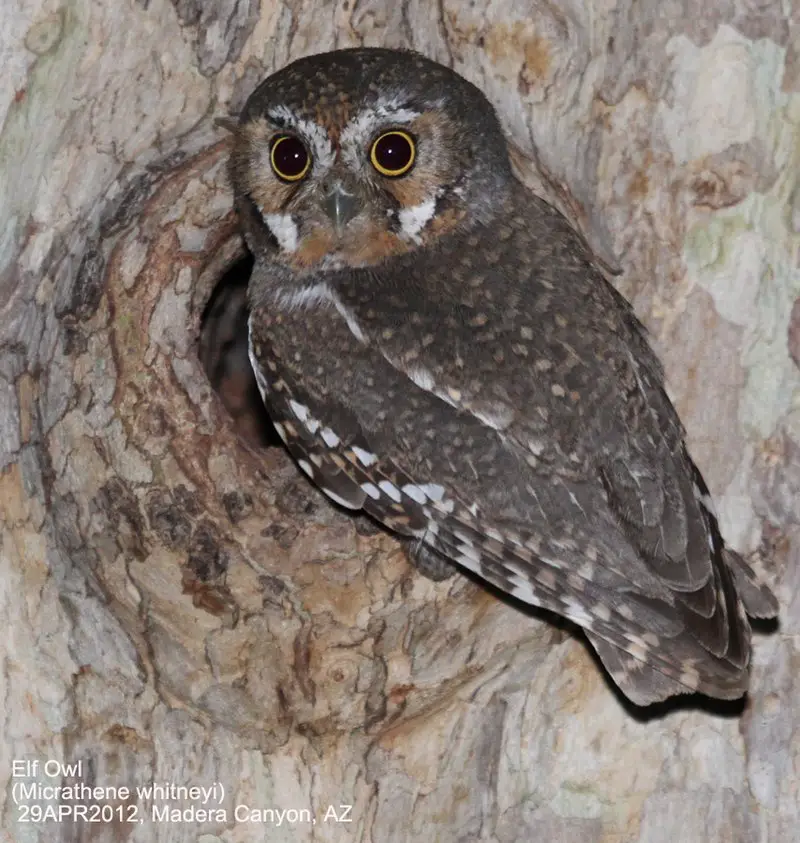
The Elf Owl is a small and fascinating bird. It’s grayish-brown in color, with pale yellow eyes that are highlighted by thin white “eyebrows” and a gray bill with a horn-colored tip.
This owl can be found throughout the Southwestern United States, central Mexico, and the Baja California peninsula.
These birds often take up residence in woodpecker holes inside saguaro cacti or natural tree cavities.
They’re nocturnal hunters who feed mainly on insects as well as other small prey such as lizards or rodents.
Despite their size they have impressive vocalizations that include whistles and harsh cries which helps them to communicate within their range during breeding season; however it also serves to alert predators of its presence.Scientific classification:
| Kingdom | Animalia |
| Phylum | Chordata |
| Class | Aves |
| Order | Strigiformes |
| Family | Strigidae |
| Genus | Micrathene Coues, 1866 |
| Species | M. whitneyi |
Also Featured In: Birds You’ll Find in Sonoran,
31. Black-Throated Sparrow
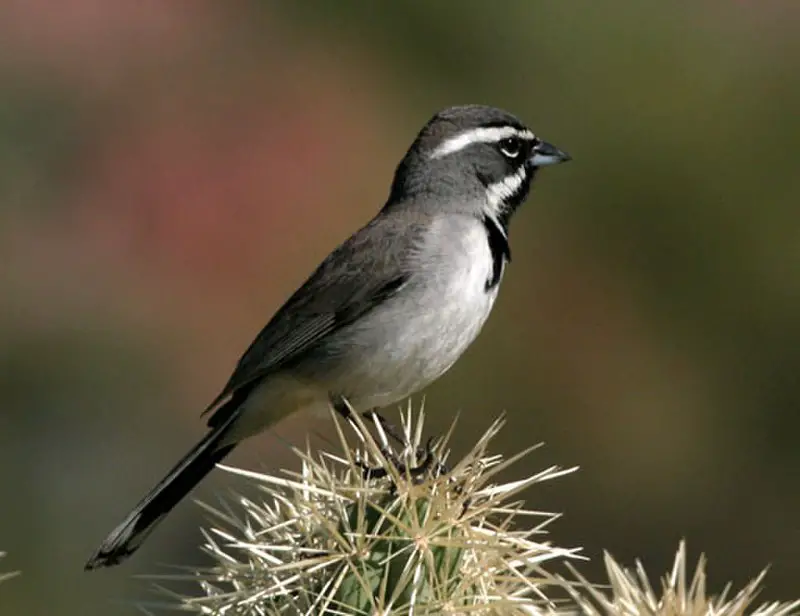
The black-throated sparrow is a small bird native to the southwestern United States and Mexico.
It is known for its striking features, including black throats with white stripes on either side as well as buffy, white underparts.
They are also recognized by their long tails and dark upper parts, which often have yellowish or rusty markings near the wings.
The birds prefer arid habitats such as deserts and scrublands; however they can be found in other areas too during migration periods.
These adaptable creatures feed on insects, seeds and grains from plants like grasses or cacti – making them an important species when it comes to sustaining healthy ecosystems.Scientific classification:
| Kingdom | Animalia |
| Phylum | Chordata |
| Class | Aves |
| Order | Passeriformes |
| Family | Passerellidae |
| Genus | Amphispiza Coues, 1874 |
| Species | A. bilineata |
Also Featured In: Sparrows Species,
32. Gila Woodpecker
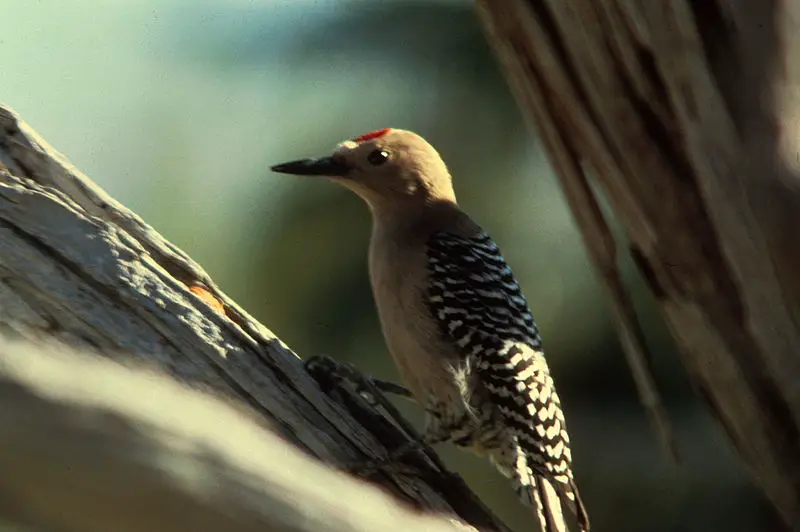
The Gila woodpecker is a medium-sized bird found in the desert regions of the southwestern United States and western Mexico.
It has a unique coloration, featuring black and white zebra-like stripes on its back, wings, and tail feathers.
Its neck, throat belly and head are greyish tan in color with small red or yellow spots on its nape.
They feed mainly on insects but have been known to eat berries when available during winter months.
These birds are social creatures that often nest together in large colonies to increase their chances of survival against predators such as hawks or owls.
The Gila woodpecker plays an important role in maintaining healthy ecosystems by eating destructive beetles while also spreading seeds from cacti they consume throughout the year.Scientific classification:
| Kingdom | Animalia |
| Phylum | Chordata |
| Class | Aves |
| Order | Piciformes |
| Family | Picidae |
| Genus | Melanerpes |
| Species | M. uropygialis |
Also Featured In: Woodpeckers Species,
33. Gilded Flicker
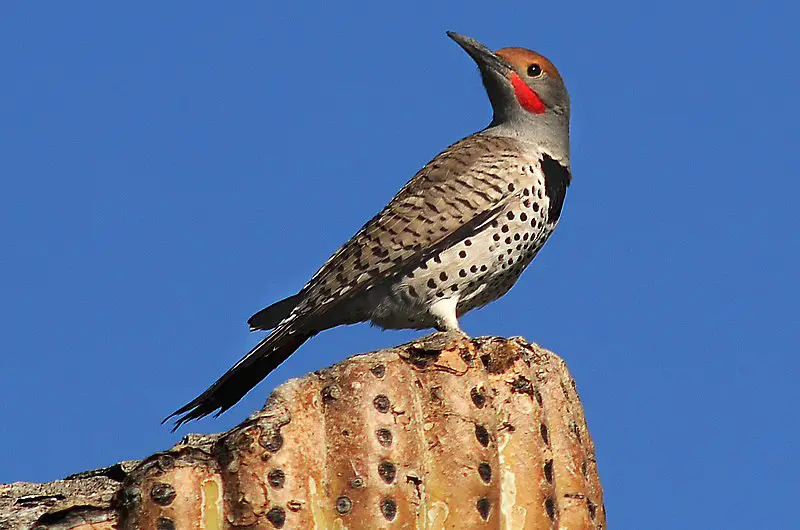
The Gilded Flicker is an impressive and striking bird that can be found in the desert regions of Southwestern United States and Northwestern Mexico.
It has a mean length of 29 cm (11 inches) which makes it one of the largest woodpeckers.
Its distinguishing feature is its golden-yellow underwings, making it stand out from other species such as the northern flicker in these areas.
This majestic bird mainly consumes insects but may also feed on fruits or berries when available, helping to spread seeds throughout their habitats.
As they are not migratory birds, they remain all year round; hence providing some stability to their local ecosystems.Scientific classification:
| Kingdom | Animalia |
| Phylum | Chordata |
| Class | Aves |
| Order | Piciformes |
| Family | Picidae |
| Genus | Colaptes |
| Species | C. chrysoides |
Also Featured In: Yellow Birds of Arizona,
34. Canyon Wren
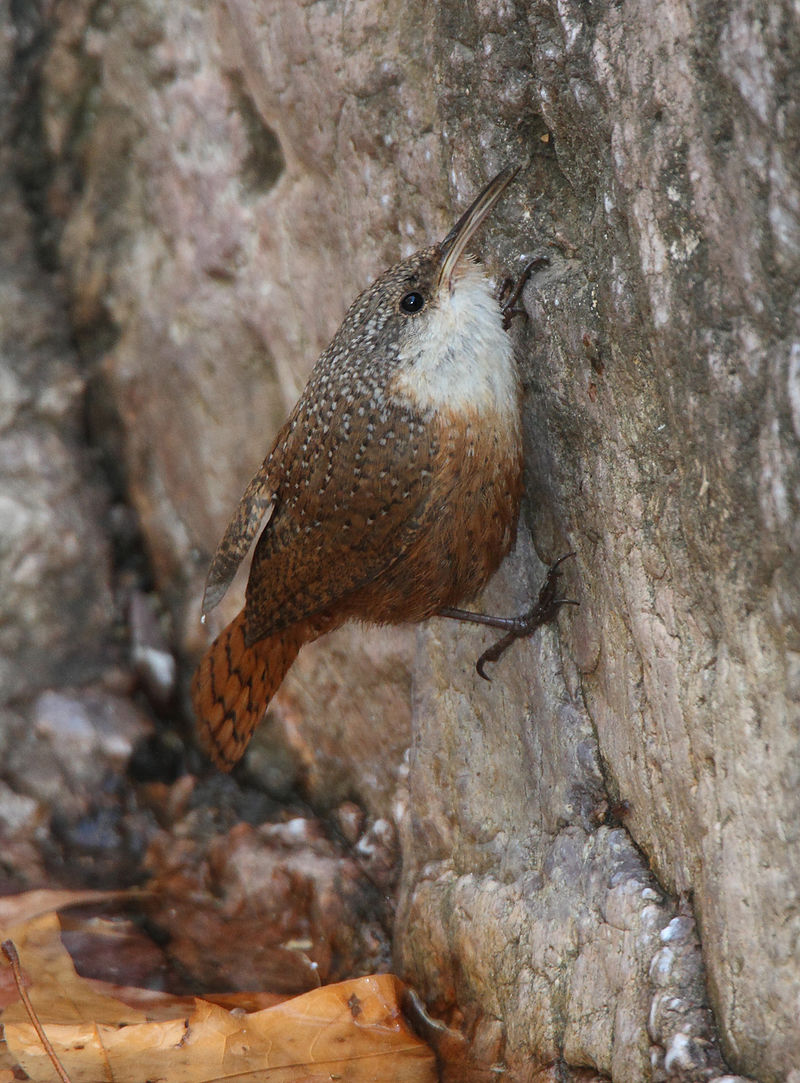
The Canyon Wren is a small songbird that belongs to the wren family, Troglodytidae. It’s native to North America and lives mainly in rocky or arid areas such as cliffs and canyons.
A distinct feature of this bird is its loud song which echoes through the canyon walls – it can be heard from far away.
The Canyon Wren has adapted well to its environment; with drab coloring helping it blend into the rocks, camouflaging itself from predators.
Its diet consists mainly of insects, spiders and snails found on cliff faces or in crevices between rocks.
As there are no other species within its taxon, they do not have any major threats aside from natural occurrences like avalanches or rock slides that could cause habitat loss for them.Scientific classification:
| Kingdom | Animalia |
| Phylum | Chordata |
| Class | Aves |
| Order | Passeriformes |
| Family | Troglodytidae |
| Genus | Catherpes Baird, 1858 |
| Species | C. mexicanus |
Also Featured In: Wrens Species, Most Common Songs Birds that Live around You
35. Verdin
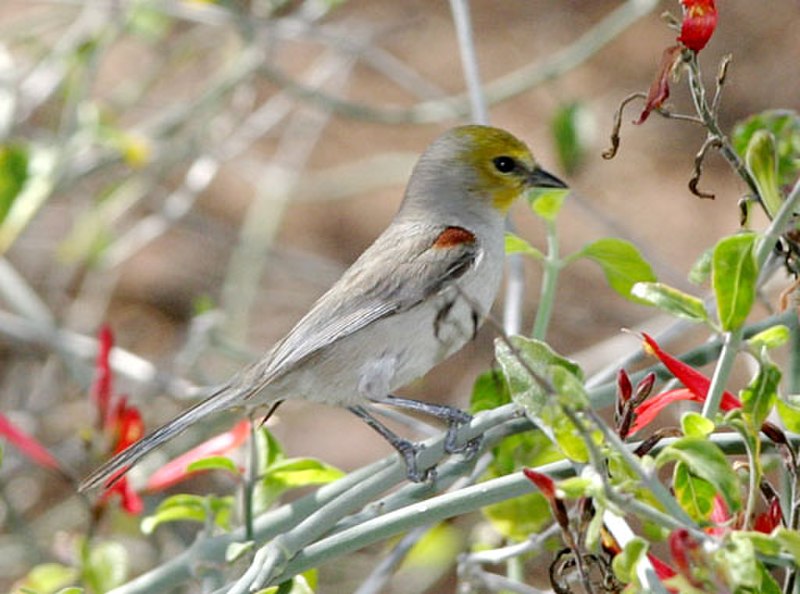
Verdin is a species of penduline tit, the only one in its genus Auriparus and family Remizidae found in North America.
It was formally described by Swedish zoologist Carl Jakob Sundevall under the binomial name Aegithalus flaviceps in 1850.
This small bird has an olive-grey coloration on its head, back and wings while having white colouring around its face with yellowish patches near eyes.
The underside is pale grey with brown tinge while feet are pinkish/brown tinted. Its diet consists mainly of insects which it forages from tree branches or shrubs.
During mating season they build intricate nests made up of grasses and moss lined inside with feathers or fur held together by spider webs usually suspended from thorny trees close to water sources like rivers or streams making them ideal for rearing young chicks before their migration towards south during winter months.Scientific classification:
| Kingdom | Animalia |
| Phylum | Chordata |
| Class | Aves |
| Order | Passeriformes |
| Family | Remizidae |
| Genus | Auriparus S.F. Baird, 1864 |
| Species | A. flaviceps |
Also Featured In: birds of Arizona, Common Birds That Live in Las Vegas
36. Curve-Billed Thrasher
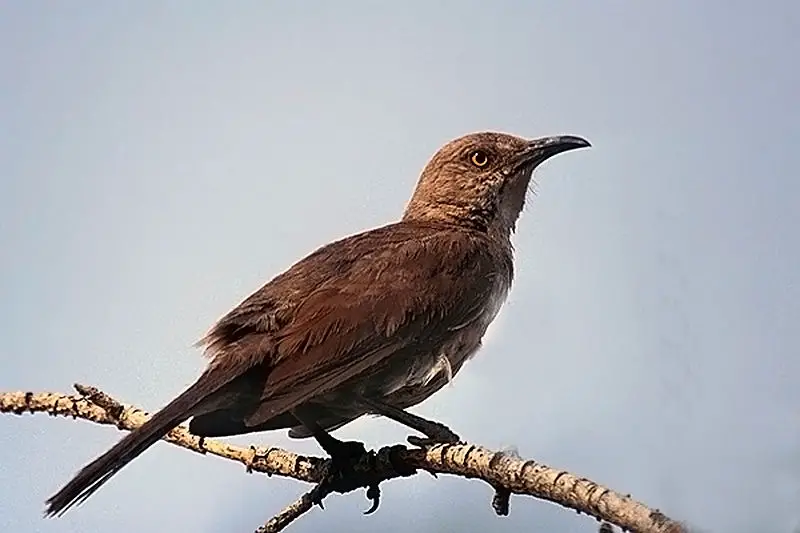
The Curve-billed Thrasher is a medium-sized bird native to Mexico and the southwestern United States. It lives mainly in desert areas, where it can be found foraging on the ground for its insect prey.
Its name comes from its curved bill, which aids in rooting out insects and other food sources.
The species has several subspecies that are geographically separated throughout much of their range; allopatric speciation likely played an important role here as well.
Despite being non-migratory, this thrasher will sometimes travel long distances when resources become scarce or during courtship displays with potential mates.
A successful predator of grasshoppers, beetles and other arthropods, the Curve-billed Thrasher plays an essential role in maintaining healthy ecosystems by controlling pest populations.Scientific classification:
| Kingdom | Animalia |
| Phylum | Chordata |
| Class | Aves |
| Order | Passeriformes |
| Family | Mimidae |
| Genus | Toxostoma |
| Species | T. curvirostre |
Also Featured In: Birds You’ll Find in South Texas , Birds You’ll Find in the Rio Grande Valley
37. Gambel’s Quail
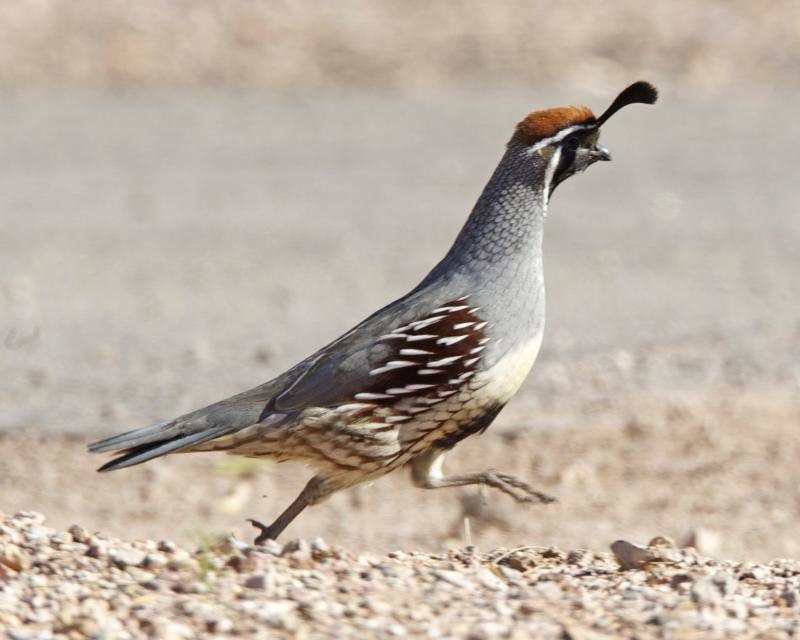
Gambel’s quail is a small bird belonging to the New World Quail family, found in desert regions of Arizona, California and other states. These birds inhabit dry areas with sparse vegetation such as cacti and shrubs.
They are named after William Gambel who explored much of the Southwestern United States during his lifetime.
This species has gray plumage on its body with a white underside and an eye-catching black plume that lies flat against their head when not displaying or calling out for mates during breeding season.
During these times they will also form large coveys (groups) which can range from 10 – 40 individuals.
When alarmed this group usually hides under nearby brush until danger passes – making them difficult to spot even in open terrain due to their camouflage coloration.Scientific classification:
| Kingdom | Animalia |
| Phylum | Chordata |
| Class | Aves |
| Order | Galliformes |
| Family | Odontophoridae |
| Genus | Callipepla |
| Species | C. gambelii |
38. Pyrrhuloxia
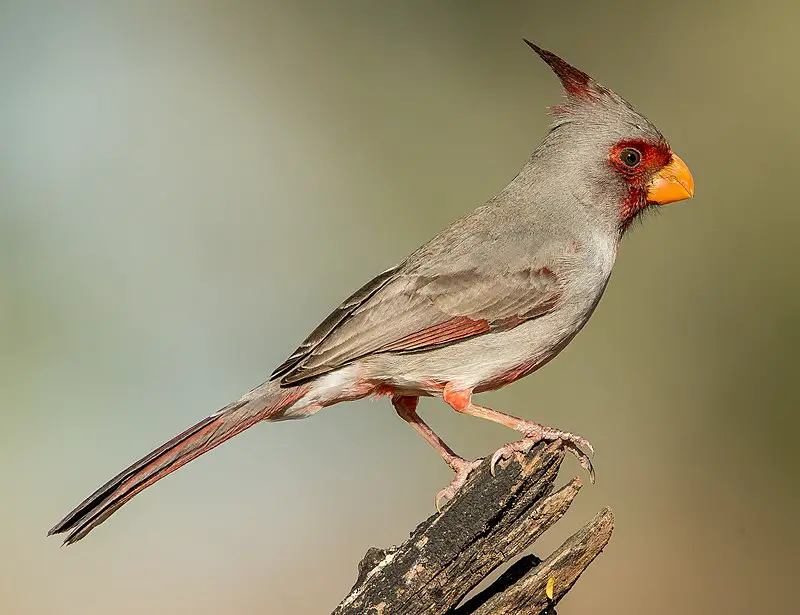
The Pyrrhuloxia, also known as the desert cardinal, is a stunningly beautiful bird native to the American Southwest and northern Mexico.
With its red crest and wings, short stout bill, it closely resembles the Northern Cardinal and Vermilion Cardinal of its same genus.
It has an average size compared to other songbirds in this area at around 18cm long with a wingspan of up to 28 cm wide.
Its diet mainly consists of small insects such as grasshoppers but they will occasionally eat some fruit or seeds too.
The Pyrrhuloxia’s singing ability rivals many birds in that region due to their clear whistles which can be heard from afar on quiet mornings.
The beauty of these birds makes them very popular among birdwatchers who come from all over just for a chance glimpse of one.Scientific classification:
| Kingdom | Animalia |
| Phylum | Chordata |
| Class | Aves |
| Order | Passeriformes |
| Family | Cardinalidae |
| Genus | Cardinalis |
| Species | C. sinuatus |
Also Featured In: Red birds You’ll See in Arizona, Red Birds You’ll See in Oklahoma
39. Phainopepla
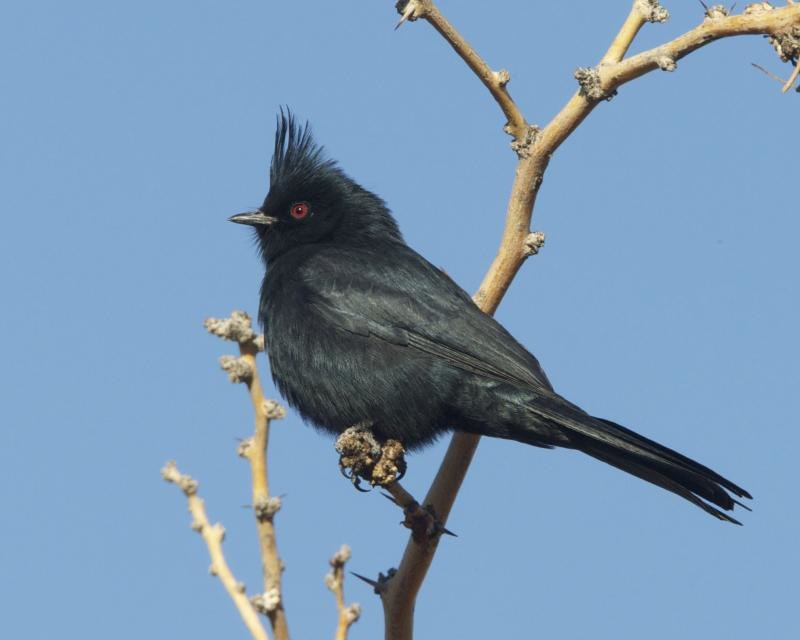
The Phainopepla bird is a stunning species to behold. It has an iridescent black plumage and stands at 16-20 cm long with a noticeable crest and long tail, giving it the appearance of wearing a ‘shining robe’.
This species belongs to the mainly tropical Central American family Ptiliogonatidae, which are known as silky flycatchers.
Its name derives from Greek origin meaning ‘shining robe’ in reference to its distinctive male plumage.
The phainopepla is natively distributed throughout North America, where they inhabit areas such as open woodlands and deserts that provide ample food sources like fruits or insects.
As fascinating birds of prey they have some interesting habits; for example they will often use their beaks to pry off bark while searching for tasty morsels beneath.Scientific classification:
| Kingdom | Animalia |
| Phylum | Chordata |
| Class | Aves |
| Order | Passeriformes |
| Family | Ptiliogonatidae |
| Genus | Phainopepla S.F. Baird, 1858 |
| Species | P. nitens |
40. Lesser Nighthawk
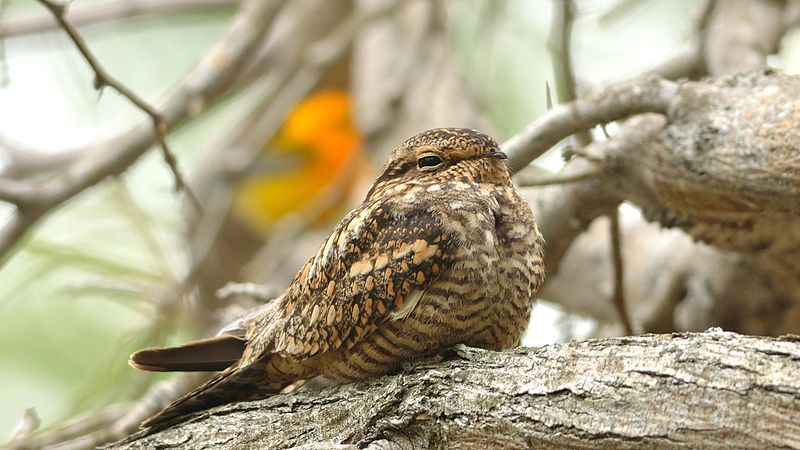
The Lesser Nighthawk is a nocturnal bird found across the Americas. Its dark brown and grey body has white patterning, while its long upper wings are black with a distinctive white bar visible in flight.
The tail is also black with thin white bars, while the underside of its body is buffy-coloured and finely streaked with horizontal lines.
Males have a bright white throat while females don’t; they both share an orange eye rim to complete their look.
During mating season males can be seen performing display flights at dusk over open areas like grasslands or riverbanks to impress potential mates.Scientific classification:
| Kingdom | Animalia |
| Phylum | Chordata |
| Class | Aves |
| Order | Caprimulgiformes |
| Family | Caprimulgidae |
| Genus | Chordeiles |
| Species | C. acutipennis |
Also Featured In: Most Common Birds in Michoacán,
41. Roadrunner
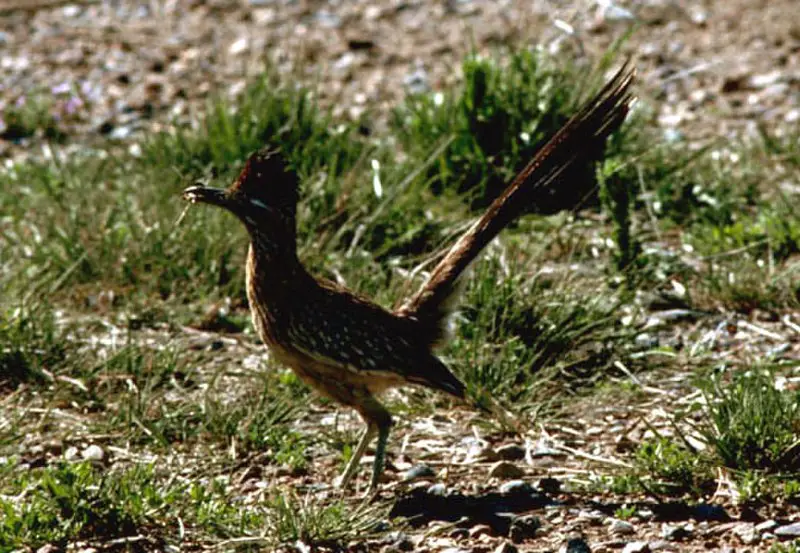
Roadrunners are fast-running ground cuckoos with long tails and crests, found mainly in the deserts of the southwestern United States and Mexico.
They can fly but usually prefer to run away from predators at speeds reaching up to 32km/h.
Their diet consists mostly of insects, lizards and small rodents.
Roadrunners have unique mating rituals where male birds will perform a dance for their mate before they build nests together out of sticks or other materials on low bushes or even directly on the ground.
These birds also make very distinct calls that sound like “beep beep” which is how they got their name – roadrunner.Scientific classification:
| Kingdom | Animalia |
| Phylum | Chordata |
| Class | Aves |
| Order | Cuculiformes |
| Family | Cuculidae |
| Subfamily | Neomorphinae |
| Genus | Geococcyx Wagler, 1831 |
Also Featured In: birds of New Mexico, Birds of Symbolism
42. Scott’s Oriole
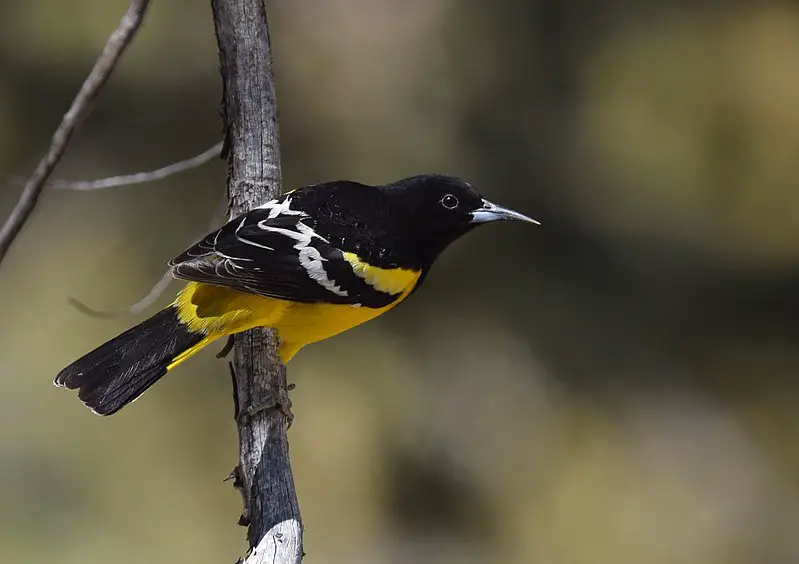
The Scott’s oriole is a medium-sized icterid found in the Southwestern United States, Mexico and Baja California Sur. Named by American soldier and naturalist John Charles Frémont for his friend Robert F.
Scott, this beautiful bird has bright yellow underparts with an orange back and black wings.
Its song consists of long series of whistles that are often likened to the sound of a flute or piccolo.
They feed mainly on insects but can also eat some fruits such as dates and figs from trees like mesquite, palo verde, live oak, sycamore and cottonwood.
This species is common south from Sacramento in California making it easy to spot if you’re lucky enough to be near its habitat.Scientific classification:
| Kingdom | Animalia |
| Phylum | Chordata |
| Class | Aves |
| Order | Passeriformes |
| Family | Icteridae |
| Genus | Icterus |
| Species | I. parisorum |
Also Featured In: birds of Nevada, Common Yellow Birds of Idaho
43. Rosy-Faced Lovebird
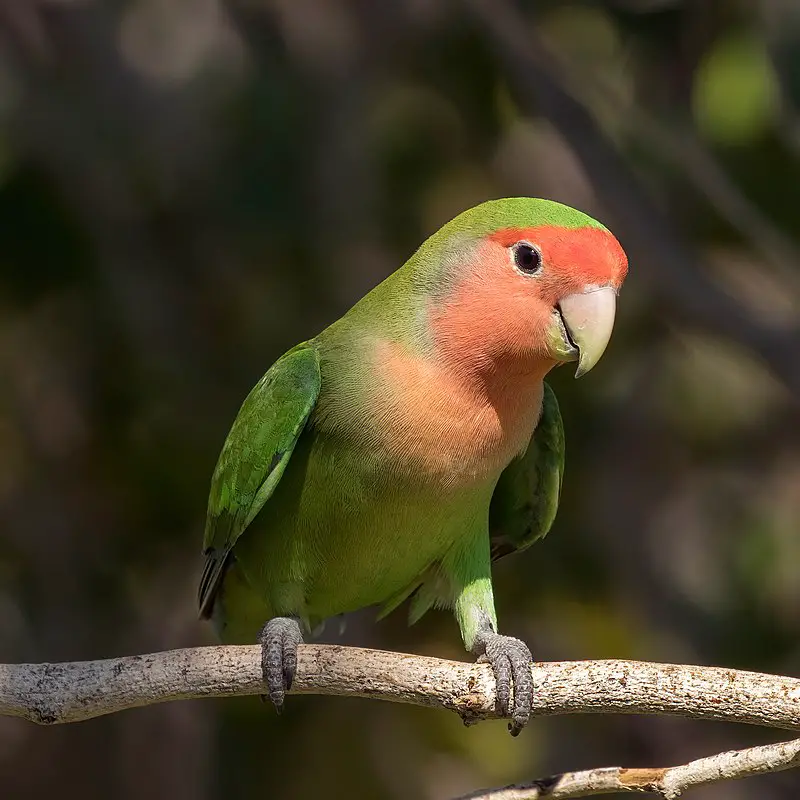
The Rosy-faced Lovebird is a vibrant and social species of bird native to arid regions in southwestern Africa. These small birds are known for their loud chirps which often come as part of large groups in the wild.
They also have wide variation between individuals when it comes to coloration, with some having more rosy hues on their faces than others.
Rosy-faced lovebirds eat throughout the day and enjoy frequent baths – they get most active during sunset where they fly around looking for food or interacting with other members of its flock.
It’s not uncommon to see these little birds playing games amongst themselves.
In captivity, they make wonderful pets due to their intelligence, friendliness and need for companionship from humans or other animals alike; making them great fits into any home environmentScientific classification:
| Kingdom | Animalia |
| Phylum | Chordata |
| Class | Aves |
| Order | Psittaciformes |
| Family | Psittaculidae |
| Genus | Agapornis |
| Species | A. roseicollis |
Also Featured In: birds of green birds, Case Birds that Live in with Us
44. American Kestrel
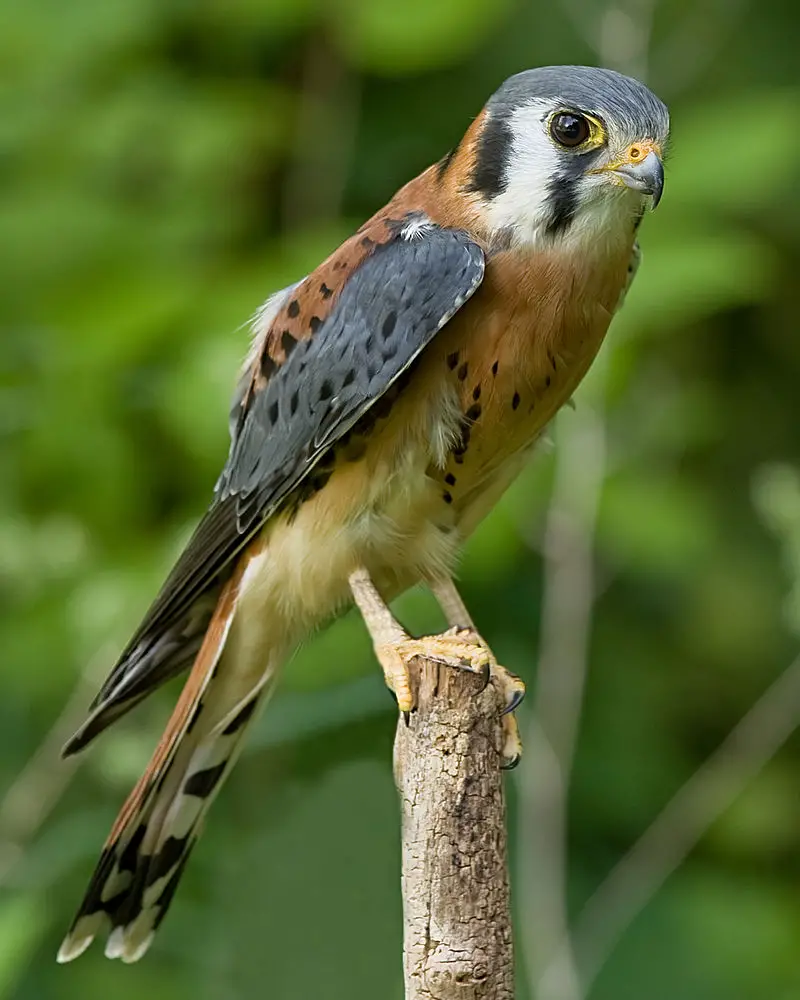
The American kestrel, also known as the sparrow hawk, is a popular falcon species in North America. It is the smallest falcon and can come in different sizes based on subspecies and sex.
Its weight ranges from that of a blue jay to a mourning dove. In addition to North America, this bird species is also found in South America.
There are 17 subspecies of American kestrels, each adapted to different environments.
Although small in size, the American kestrel is a fierce predator, often preying on insects, rodents, and other small birds.
Its impressive hunting skills and stunning coloration make it a favorite among birdwatchers and falconers alike.Scientific classification:
| Kingdom | Animalia |
| Phylum | Chordata |
| Class | Aves |
| Order | Falconiformes |
| Family | Falconidae |
| Genus | Falco |
| Species | F. sparverius |
Also Featured In: Birds That Live in Colorado, Long Island Birds You Should Know
45. Common Ostrich
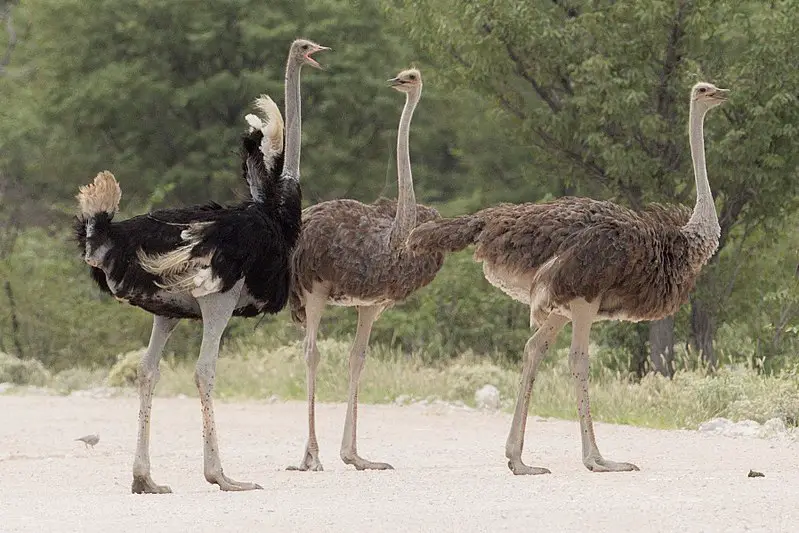
The common ostrich, also known as Struthio camelus, is a flightless bird and the largest living species of bird in the world.
They are native to specific regions of Africa and are the only living members of their genus, Struthio, in the ratite order of birds.
Another ostrich species, the Somali ostrich, is the only other member of the genus Struthio. Common ostriches are known for their long necks and legs, with their wings being too small for flight.
They have an omnivorous diet, feeding on plants, insects, and small animals.
During mating season, males engage in courtship displays and compete for mates, with the females laying their eggs in a communal nest.
These birds are important ecologically and culturally, but they are also threatened by habitat loss and hunting for their meat, feathers, and skin.Scientific classification:
| Kingdom | Animalia |
| Phylum | Chordata |
| Class | Aves |
| Infraclass | Palaeognathae |
| Order | Struthioniformes |
| Family | Struthionidae |
| Genus | Struthio |
| Species | S. camelus |
Also Featured In: African Birds, Birds You’ll Find in Zoo
46. Ostriches

Ostriches are massive birds that cannot fly. They lay the biggest eggs amongst land animals. These birds are remarkable sprinters, with a top speed of 70 km/h.
They are farmed in several countries, with the Philippines and Namibia being the most significant producers.
Famed for their leather, ostriches are bred for their hides, which are in high demand for their durability and aesthetics.
Their long and thick plumes are often used as decorations or in fashion accessories.
Despite their size, ostriches are primarily herbivores, feeding on shoots, leaves, flowers, and grass. They are social animals and live in groups of up to 50 in the wild.Scientific classification:
| Kingdom | Animalia |
| Phylum | Chordata |
| Class | Aves |
| Infraclass | Palaeognathae |
| Order | Struthioniformes |
| Family | Struthionidae |
| Genus | Struthio Linnaeus, 1758[1] |
Also Featured In: Most Common Nature Birds, Savanna Birds You Need to See
47. Chinese Hwamei
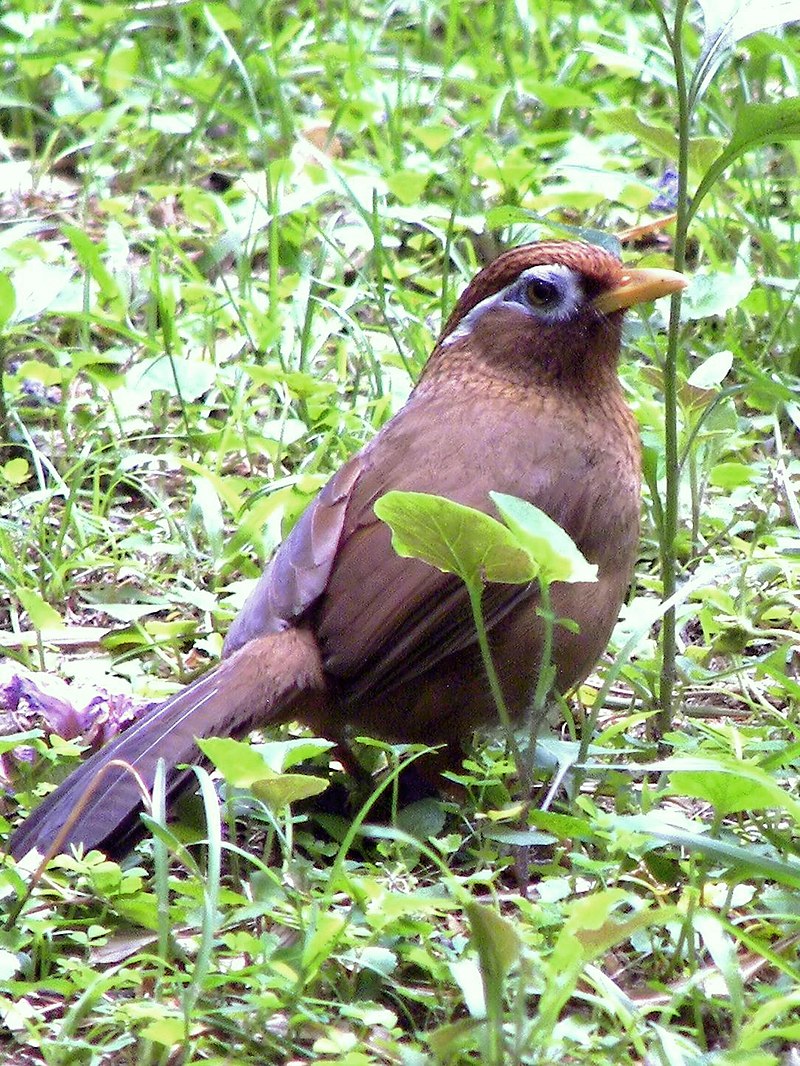
The Chinese hwamei, also known as the melodious laughingthrush, is a passerine bird found in eastern Asia. Its Chinese name, huà méi, means “painted eyebrow” due to its distinctive marking around its eyes.
This species is popular as a cagebird because of its beautiful song. There are two subspecies of this bird, G.c. canorus, which is native to Taiwan and southern China, and G.c. taewanus, found in central China.
The hwamei is a member of the Leiothrichidae family and is known for its striking appearance and musical ability. It can be found in various habitats such as forests, parks, and gardens.
The Chinese hwamei is a delightful bird to observe and listen to for both bird enthusiasts and nature lovers alike.Scientific classification:
| Kingdom | Animalia |
| Phylum | Chordata |
| Class | Aves |
| Order | Passeriformes |
| Family | Leiothrichidae |
| Genus | Garrulax |
| Species | G. canorus |
48. Campylorhynchus
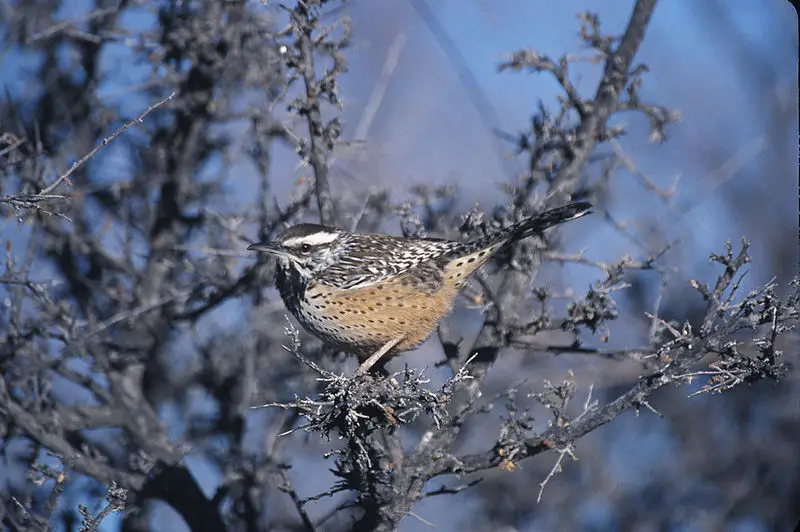
Campylorhynchus is a genus of wrens with over 15 known species found in South and Central America, some even in southwestern United States. These are the largest wrens with a size range of 17-22 cm.
The giant wren is the largest species of this genus. The species are known for their long and curved bills. In 2007, a genetic study established the relationships between the different species in the genus.
The birds are known for their distinctive songs and are often found in pairs or family groups. They prefer dry habitats and can be found in deserts and scrublands. Their diet varies from insects to fruits and seeds.
Campylorhynchus birds are known for their ability to build large twig nests often seen on cacti and thorny bushes.Scientific classification:
| Kingdom | Animalia |
| Phylum | Chordata |
| Class | Aves |
| Order | Passeriformes |
| Family | Troglodytidae |
| Genus | Campylorhynchus Spix, 1824 |
49. Crissal Thrasher
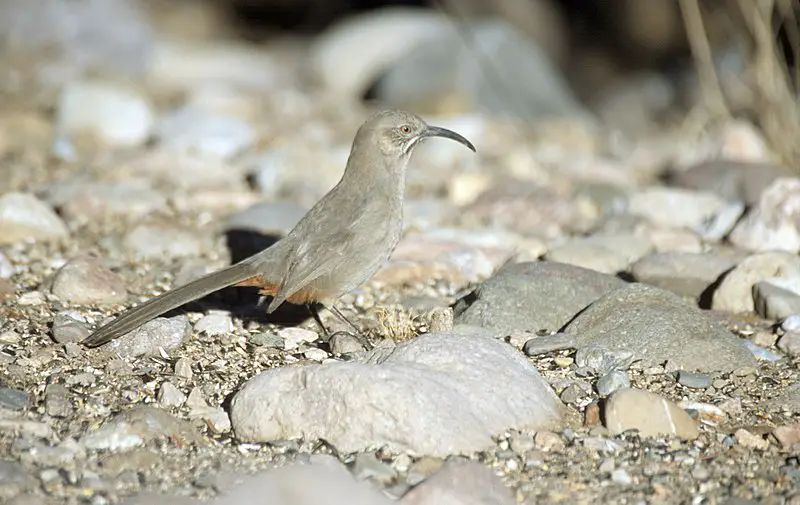
The Crissal thrasher is a sizeable bird that can be found in the Southwestern region of the United States and central Mexico.
It can grow up to 32 centimeters in length and is easily recognizable by its curved beak and dull yellow eyes.
It is a member of the thrasher family and is known for its distinctive singing voice.
The Crissal thrasher prefers to live in dense, thorny vegetation and can often be found in desert habitats. It feeds primarily on insects, but also eats fruits and small vertebrates.
Despite being a common bird in its range, the Crissal thrasher is somewhat elusive and can be difficult to spot due to its tendency to stay hidden in dense brush.
Bird enthusiasts consider the Crissal thrasher to be a beloved and impressive species due to its unique features and behavior.Scientific classification:
| Kingdom | Animalia |
| Phylum | Chordata |
| Class | Aves |
| Order | Passeriformes |
| Family | Mimidae |
| Genus | Toxostoma |
| Species | T. crissale |
50. Buteos
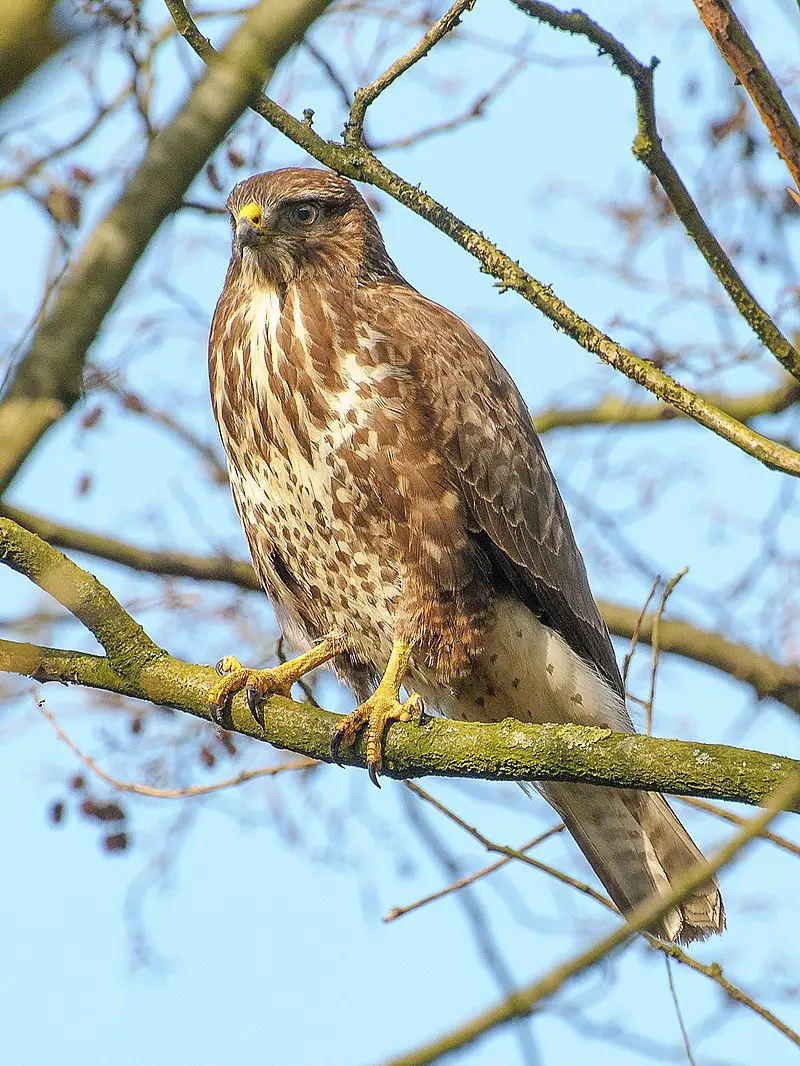
Buteos are robust-bodied birds of prey with broad wings that belong to the genus Buteo. The term “buzzard” is commonly used for members of this genus in the Old World, whereas “hawk” is used in the New World.
However, both terms are ambiguous, and some organizations prefer to use the Latin name of the common buzzard, Buteo, to avoid confusion.
Buteos are medium to fairly large birds, known for their powerful flying abilities and hunting skills.
These raptors are wide-ranging and can be found in a variety of habitats, including open grasslands, forests, and coastal areas.
Overall, Buteos are fascinating birds that play an important role in maintaining the ecological balance of their ecosystems.Scientific classification:
| Kingdom | Animalia |
| Phylum | Chordata |
| Class | Aves |
| Order | Accipitriformes |
| Family | Accipitridae |
| Subfamily | Buteoninae |
| Genus | Buteo Lacépède, 1799 |
Also Featured In: Birds of Côte d’Ivoire,